June 21, 2020
Martha O'Kennon
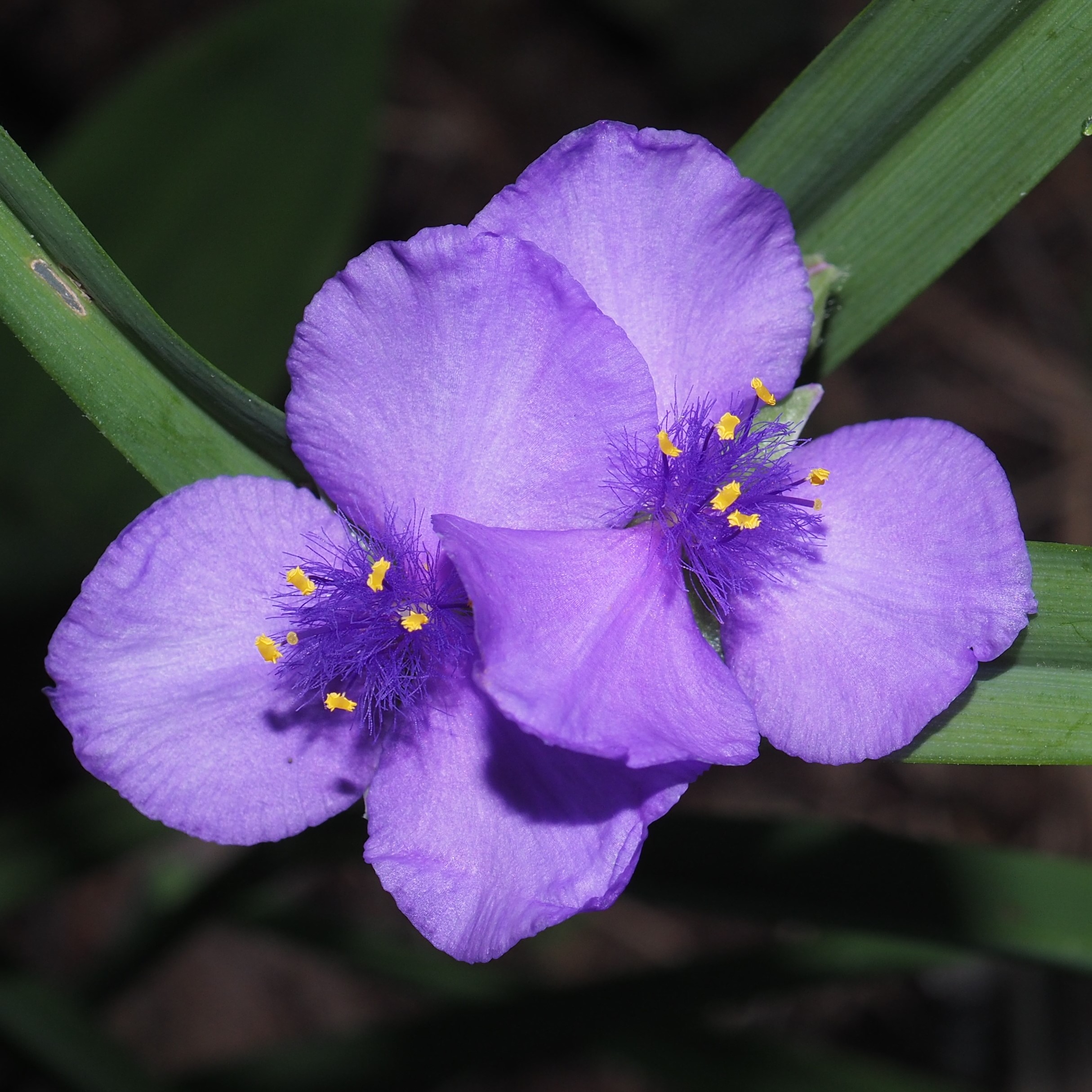
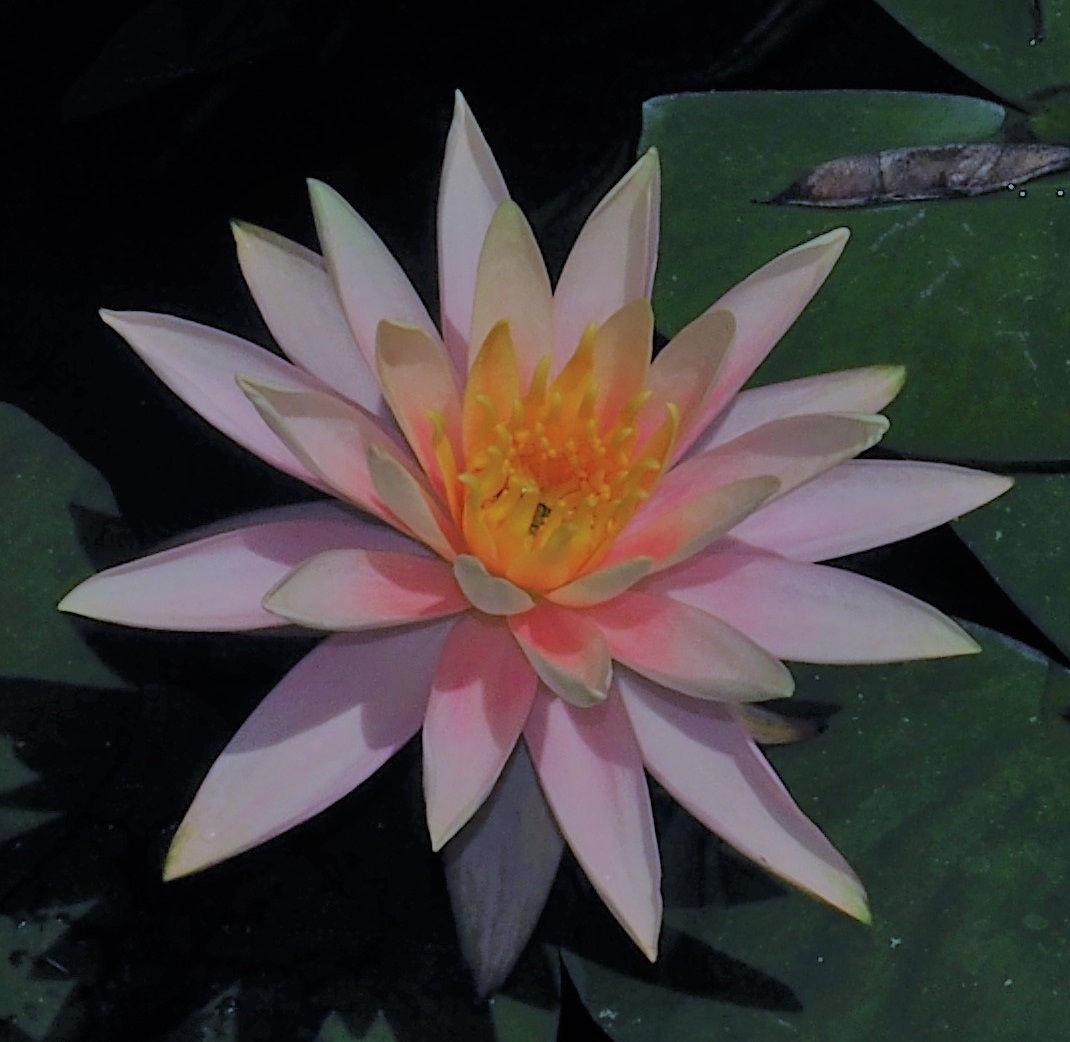
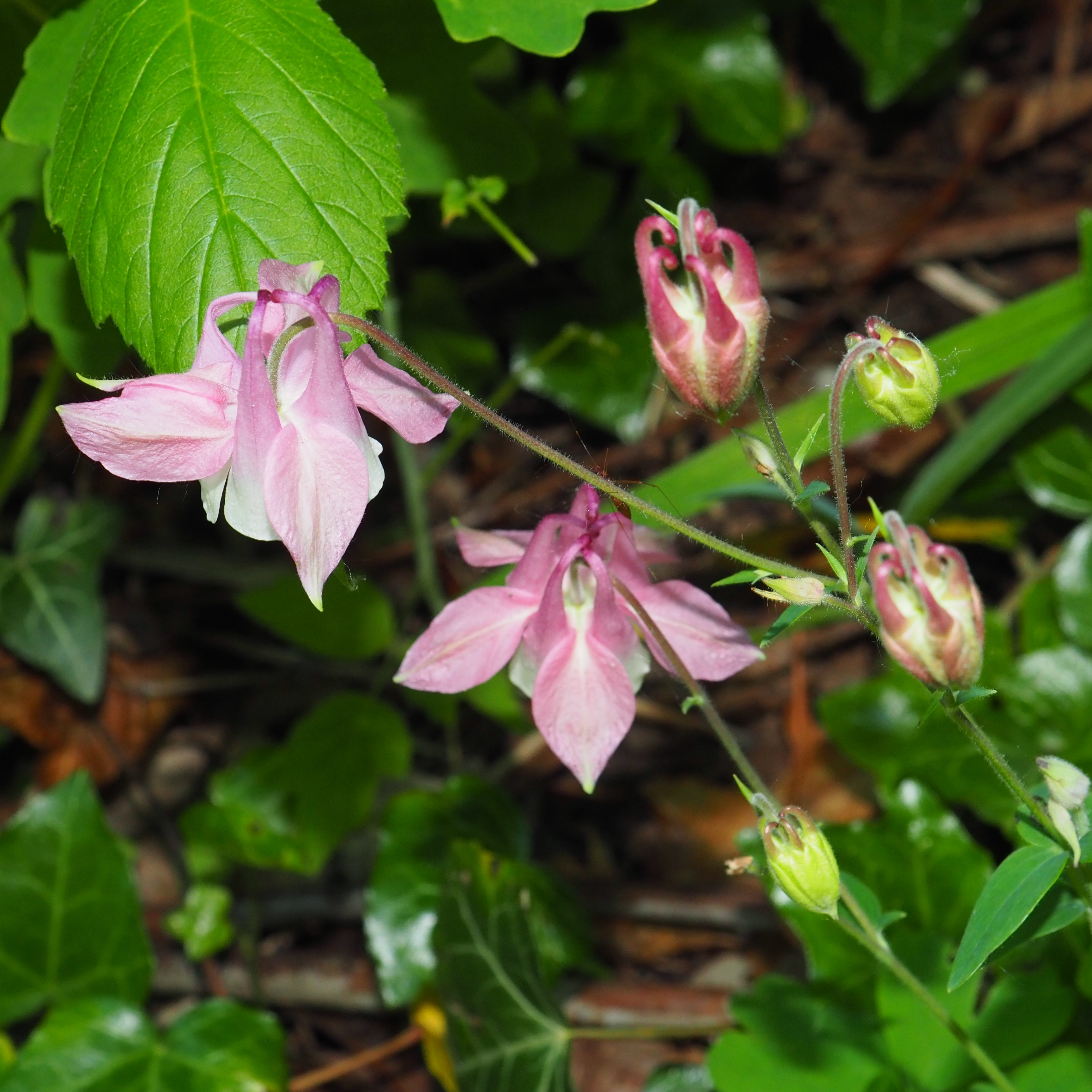
Yes, I think we will be right now if we call it Summer. I've run the AC for about a week now. The daytime outdoor temperature has been into about 85 F, or 30 C. A little humid, but not so bad. The nights are glorious. So early Summer ought to be just about perfect. The Spiderworts still bloom the most and in all their color variations from purple to purple. But the Water Lilies are really coming into their own. Last year we had three or four different colors but so far the pink ones think they are Mom's favorites. The columbines in the driveway are just about gone except for this little one that has only been blooming for a couple of days.
Remember that there is information in the name of the file for each image. You can see it by mousing over the image - look at the lower left of the screen. Or you can click on the image to get to the (usually) larger image. Then the info is displayed in the address line above. Sometimes the second click will actually display a different view of the original image.
The ants that run around the shop wall are mostly Small Honey Ants (number 1) or Eastern Black Carpenter Ants, which we see in picture 2 capturing (I think) an Earwig. The third one was a surprise: I was trying to get my out-board pond filter to run.. When I opened the lid, I found that it was stuffed with ants scurrying around with their pupae. I still don't know what they might have been. I have to get them out soon so I can have nice fresh water for the pond.
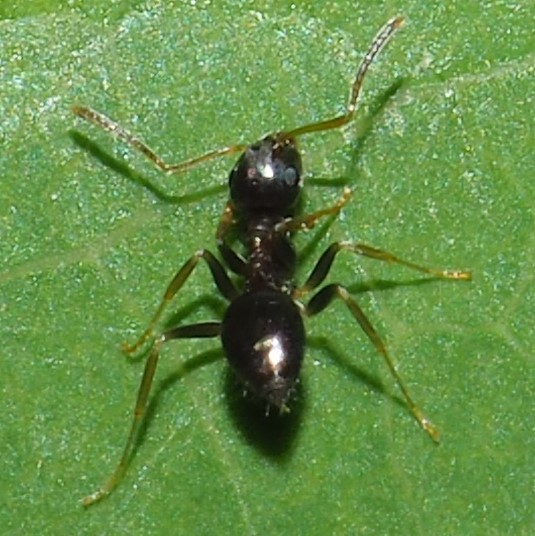
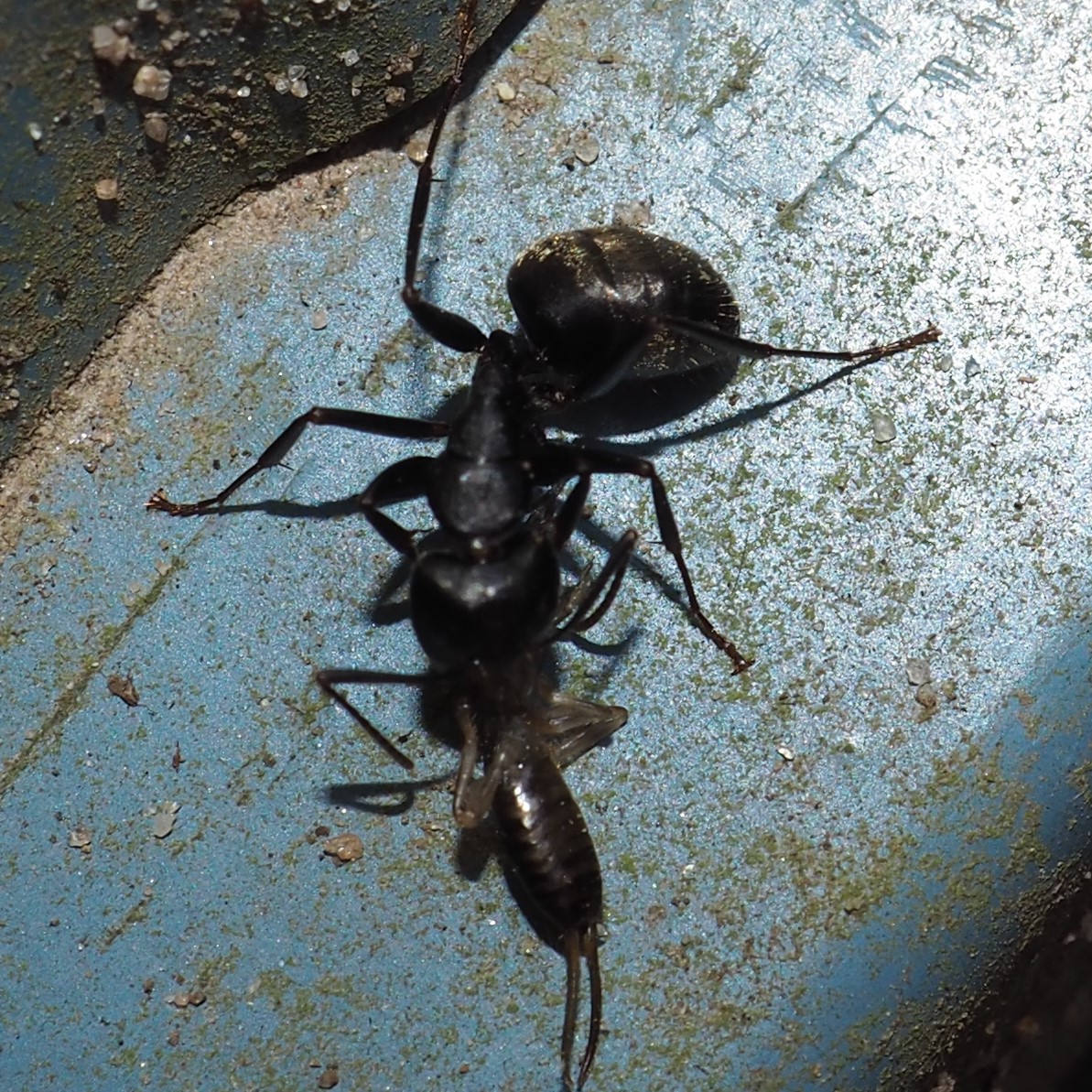
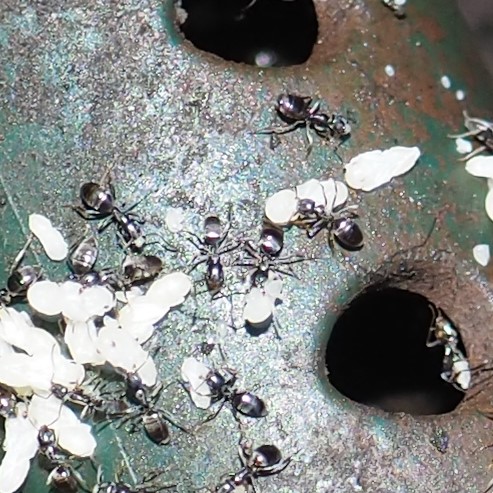
In fact, the Ants are quite busy these days playing Nanny to the nymphs of at least two kinds of Treehoppers. Here are two Acrobat Ants (only about an eighth of an inch (3 mm) long, tending to nymphs of the Two Mark Treehoppers in one of my Redbud saplings. This assemblage has been put into a "Tupperware" box for observation. Second is an Eastern Black Carpenter Ant with nymphs outside. The third one was found near an installment of Keeled Treehopper (not shown), probably waiting for the many eggs to hatch into nymphs.
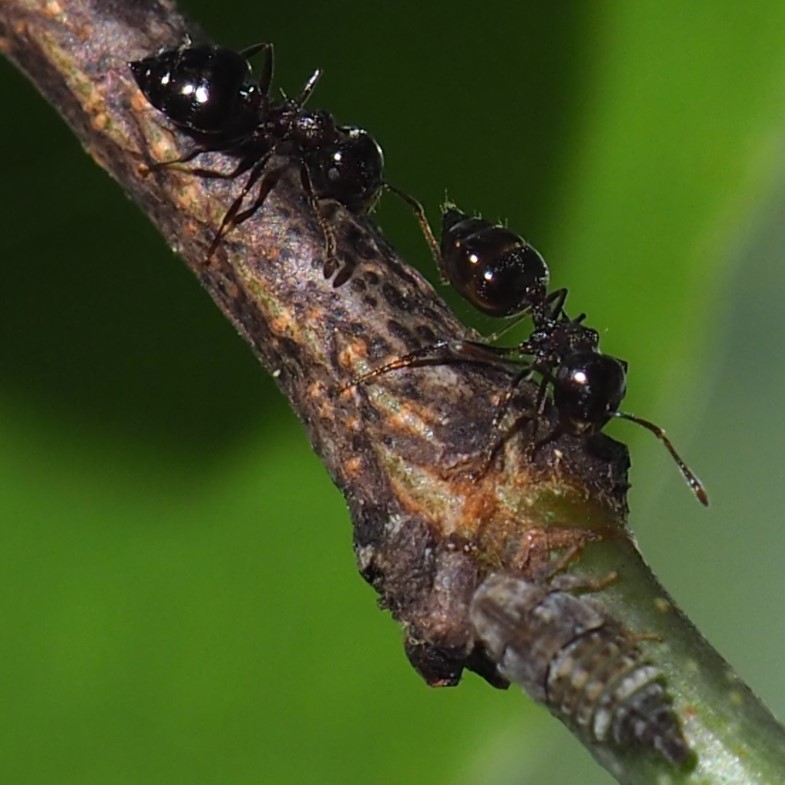
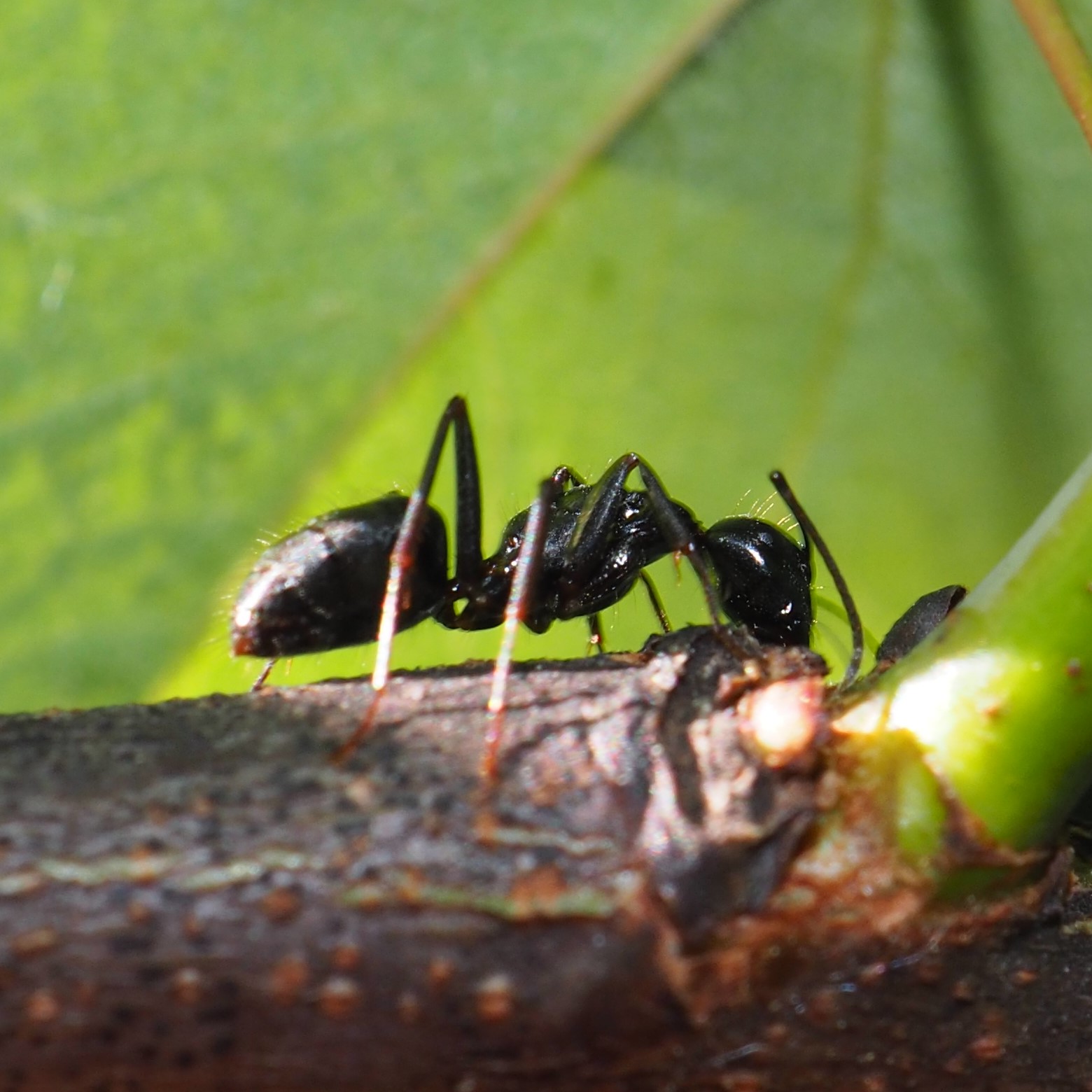
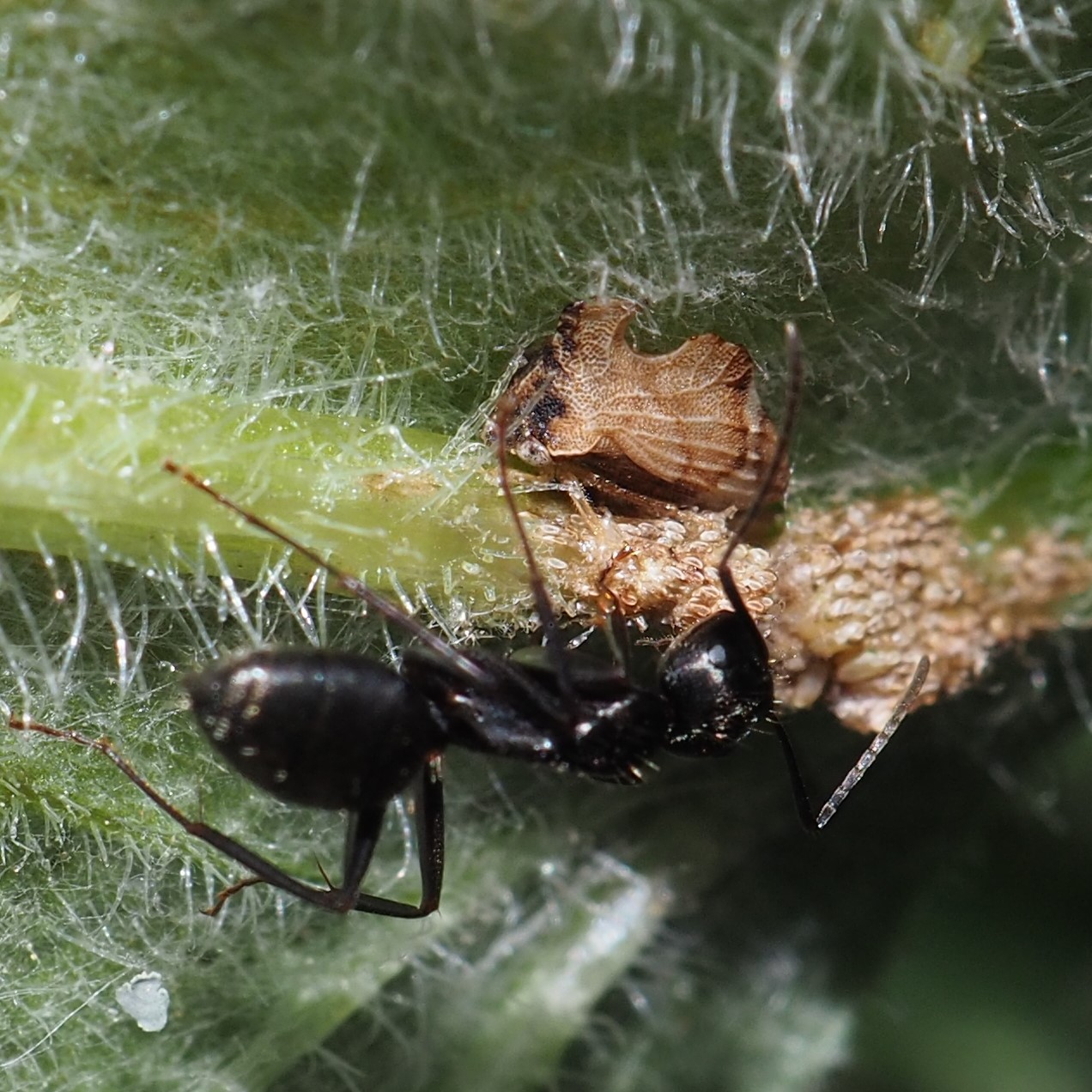
We had some results from watching the nymphs of a certain class of Barklice for almost a month - starting on May 17, when they became just barely visible to the naked eye. They gradually disappeared. I know the very little harmless-looking spiders were picking some of them off. Anyway the other day, I noted three remaining nymphs that had gotten to just about the time to morph into adults, but the question was, what species of adults? Well, on the morning of June 15, at about the place where I'd last seen the nymphs were three adult Polypsocus corruptus Barklice. Gradually more showed up, presumably near where the nymphs had secreted themselves. Here you see the last nymph seen on June 14th, and some of the adult P. corruptus seen on the morning of June 15.
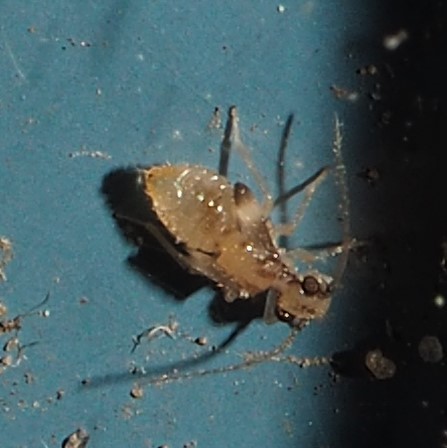


The Barklice present quite a few problems for someone who likes to solve pattern questions. Another little barklouse nymph that had been showing up was this little yellow-eyed one. You can see that its wings are fairly far advanced and that we should have been expecting to see its adult form. Well, shortly after the P. corruptus showed up to solve the problem of the North Wall nymphs, this one appeared. I don't know where the nymph had come from, but it hasn't been seen since the adult in picture 2 came into existence.
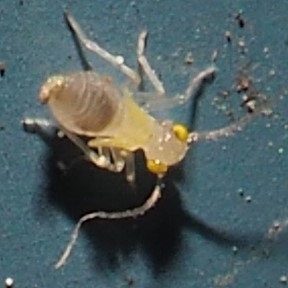
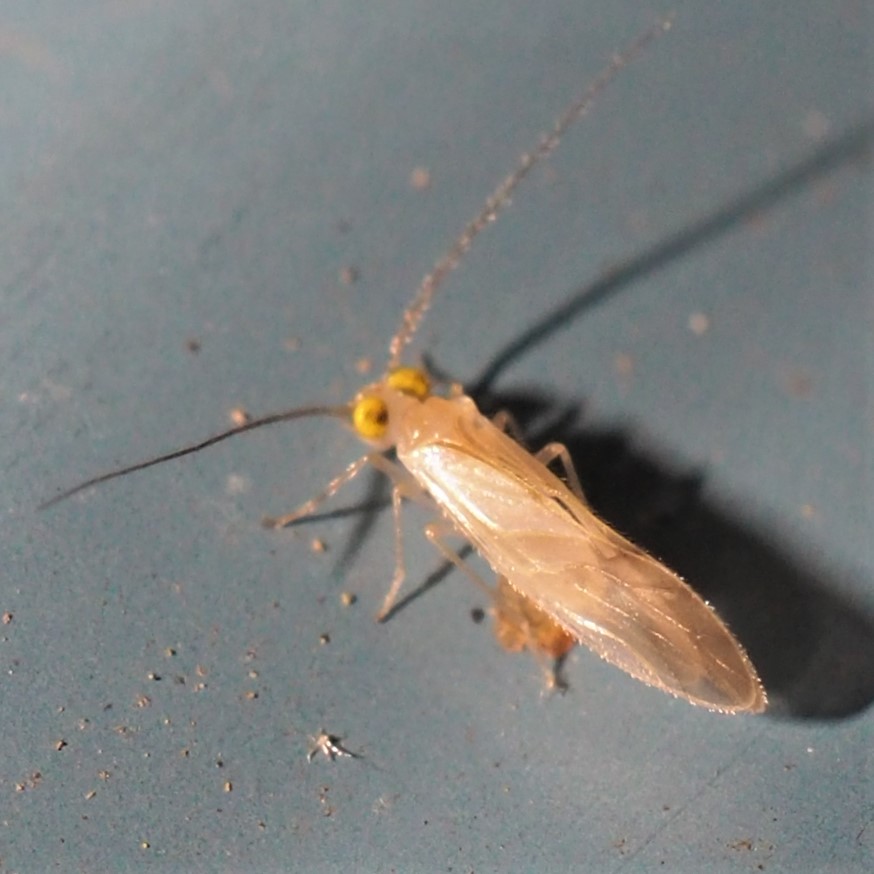
Meanwhile, I'd been seeing quite a few (about 8 or so) clusters of eggs, which resembled other barklouse eggs. Here is a clutch of eight eggs from the East Wall. Finally yesterday (June 19) they seem to have mostly hatched, presenting this scene (picture 2) with all but two of them hatched. On June 20, all but one have hatched.
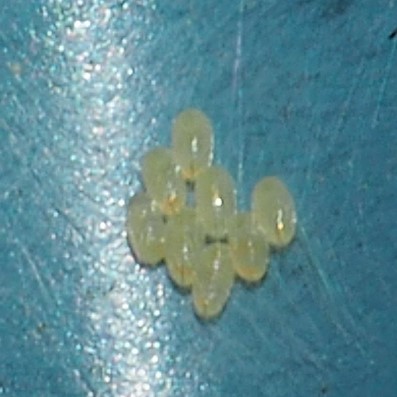
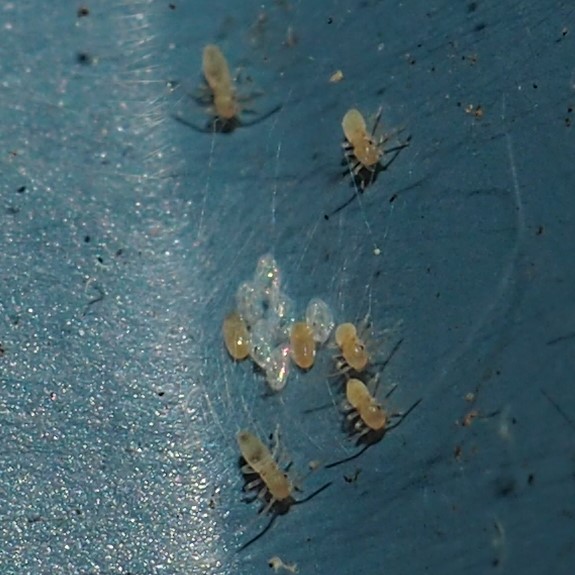
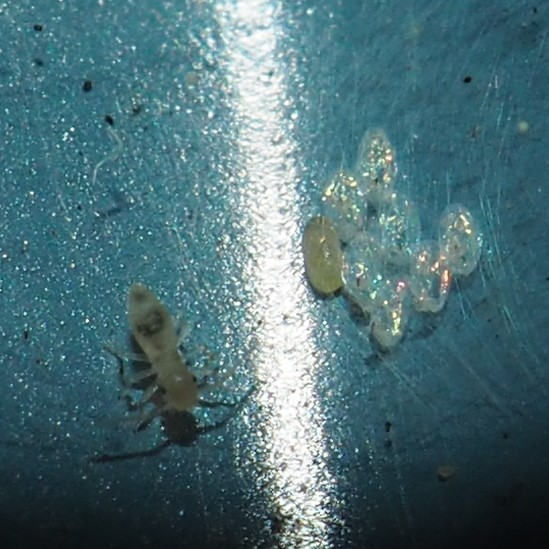
So just remember that Barklice, although almost invisible, are fascinating petite minuscule little creatures that are worth keeping your eyes peeled for. Now let's see what we have in the way of Bees. Oh yes, my dear little Nomads. John Ascher of iNat believes this one is Nomada maculata (spotted).
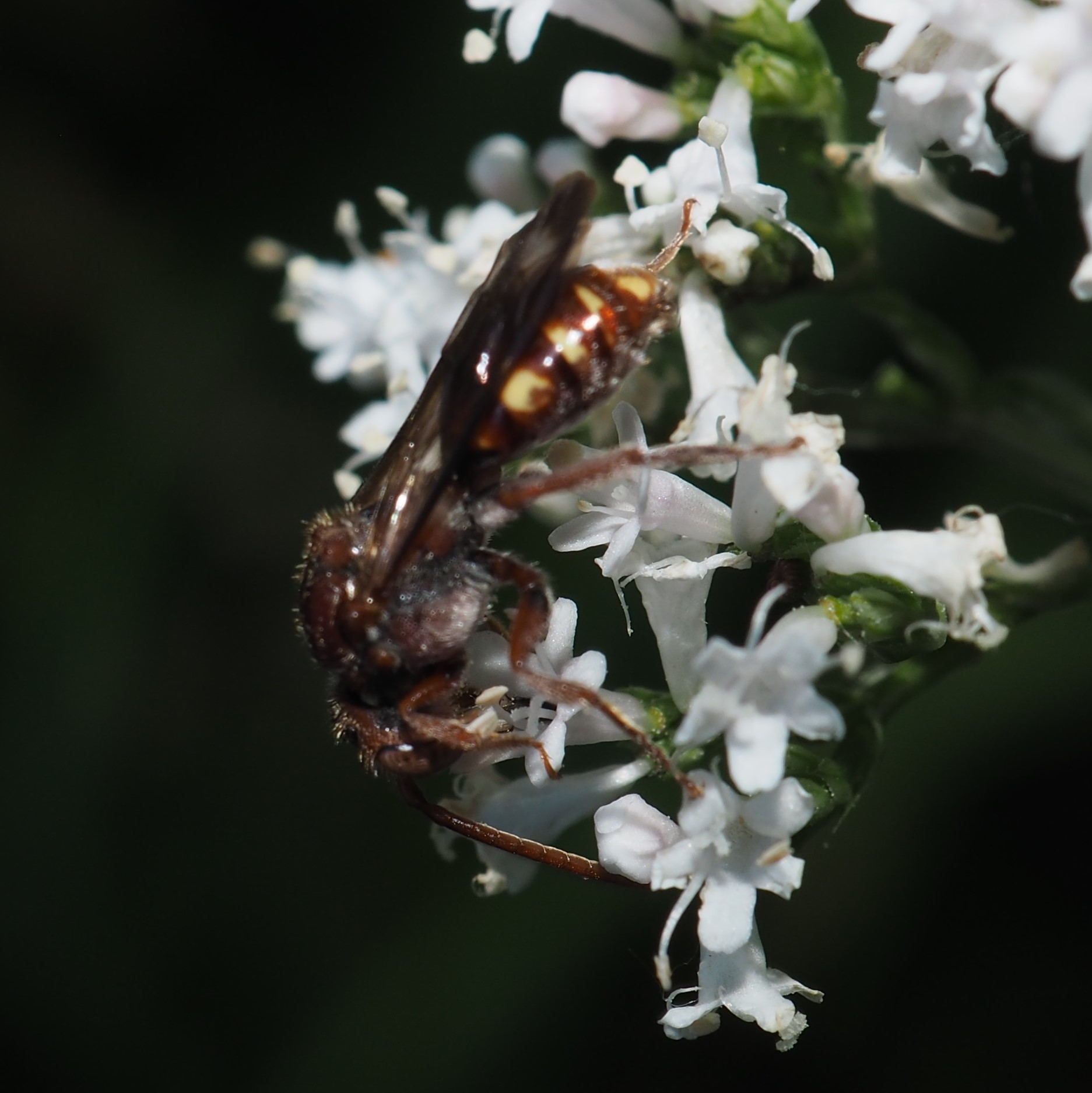


Now for the Beetles. Two Carpet Beetles for a start. Third is an apology for calling this beetle a Black Vine Weevil. It was corrected by @buzzman of iNat to a Strawberry Root Weevil (Otiorhynchus ovatus). We also had a number of Redbud Seed Weevils, which are now all over the Goutweed.
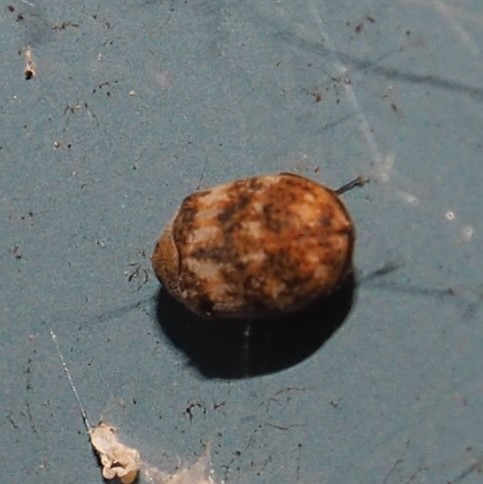
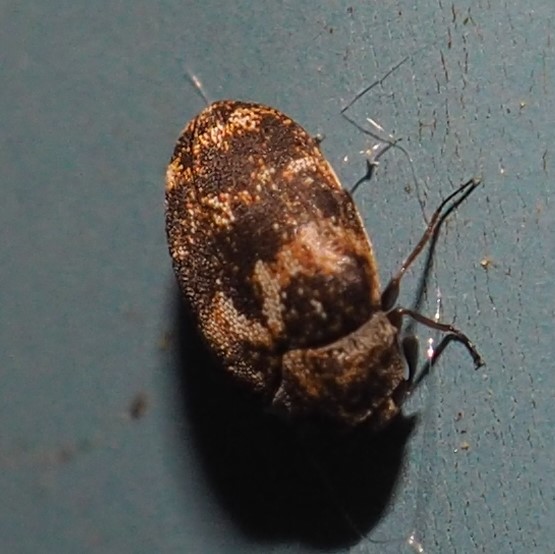
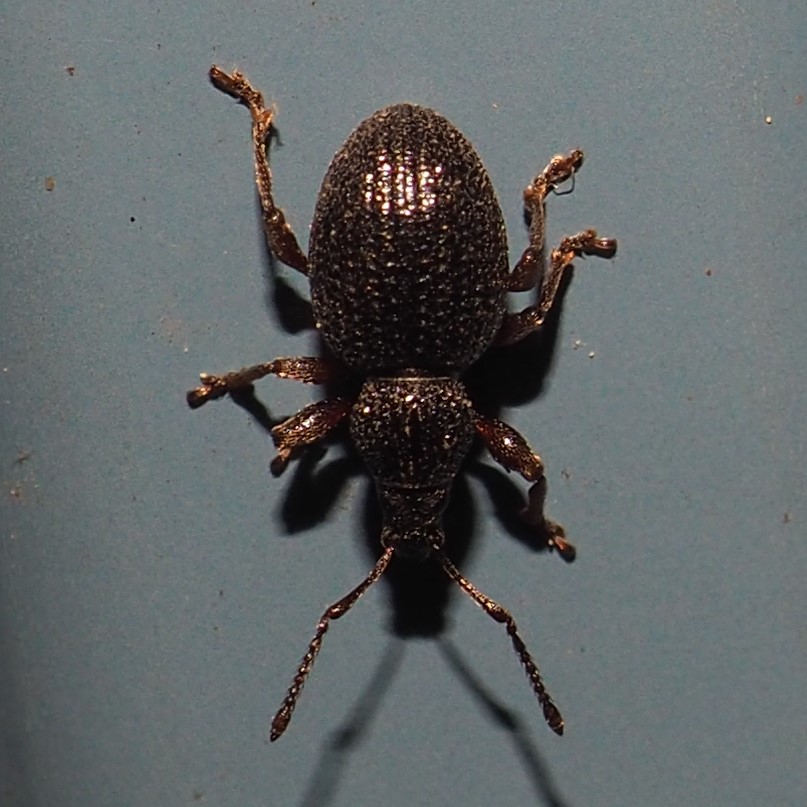
Our Assassin Bugs come in two color combos, Pale Green and Four-spurred, whatever that means. As nymphs, the Pale Green ones have red eyes while the others have dark eyes. They are mostly adults nowadays, and sure enought the Pale Greens still have red eyes. But to me, so does this Four-spurred. The third picture shows another one, a nymph, that was ID'ed as a Four-Spurred but seems so shriveled I didn't even know it was one of the two Assassins. Go figure!
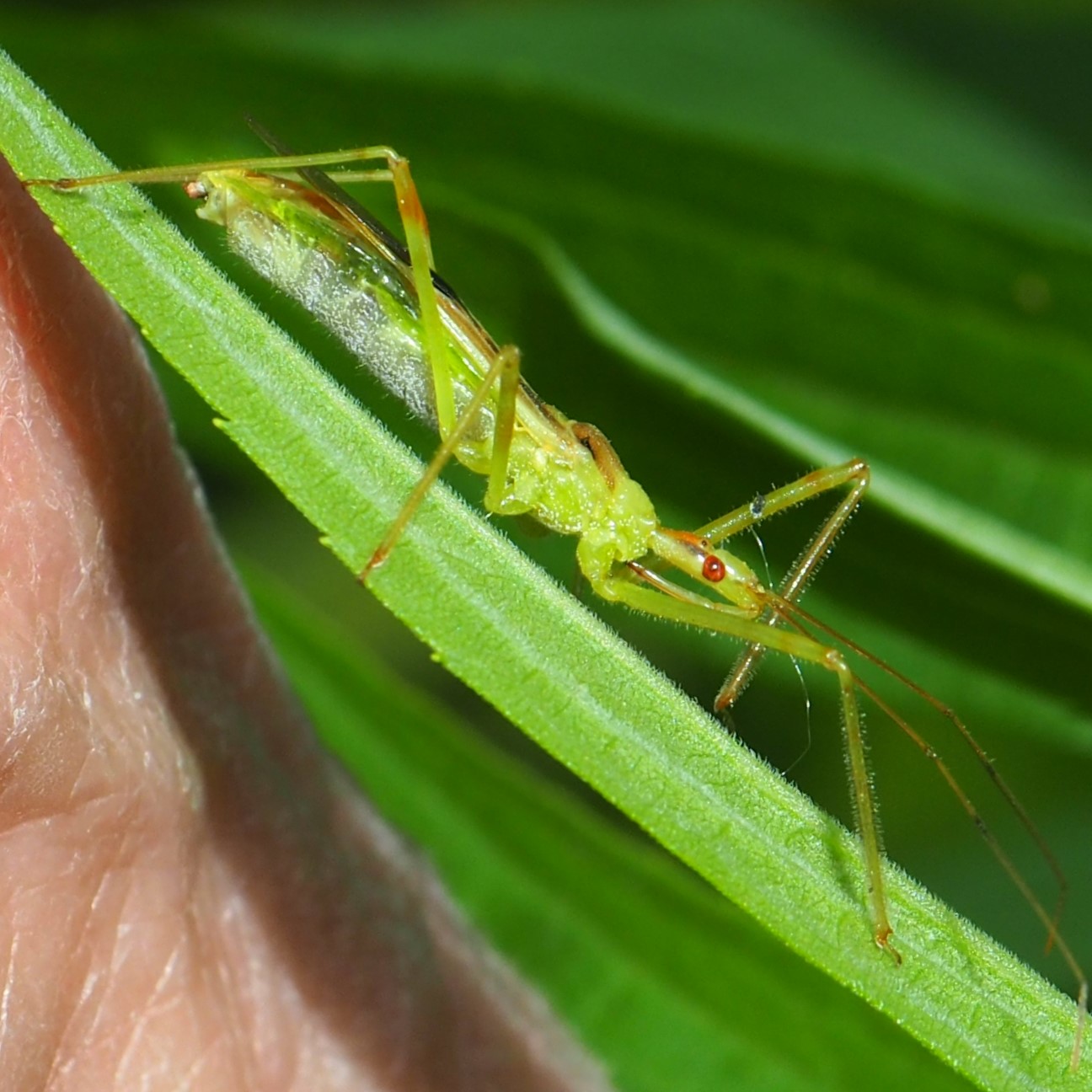
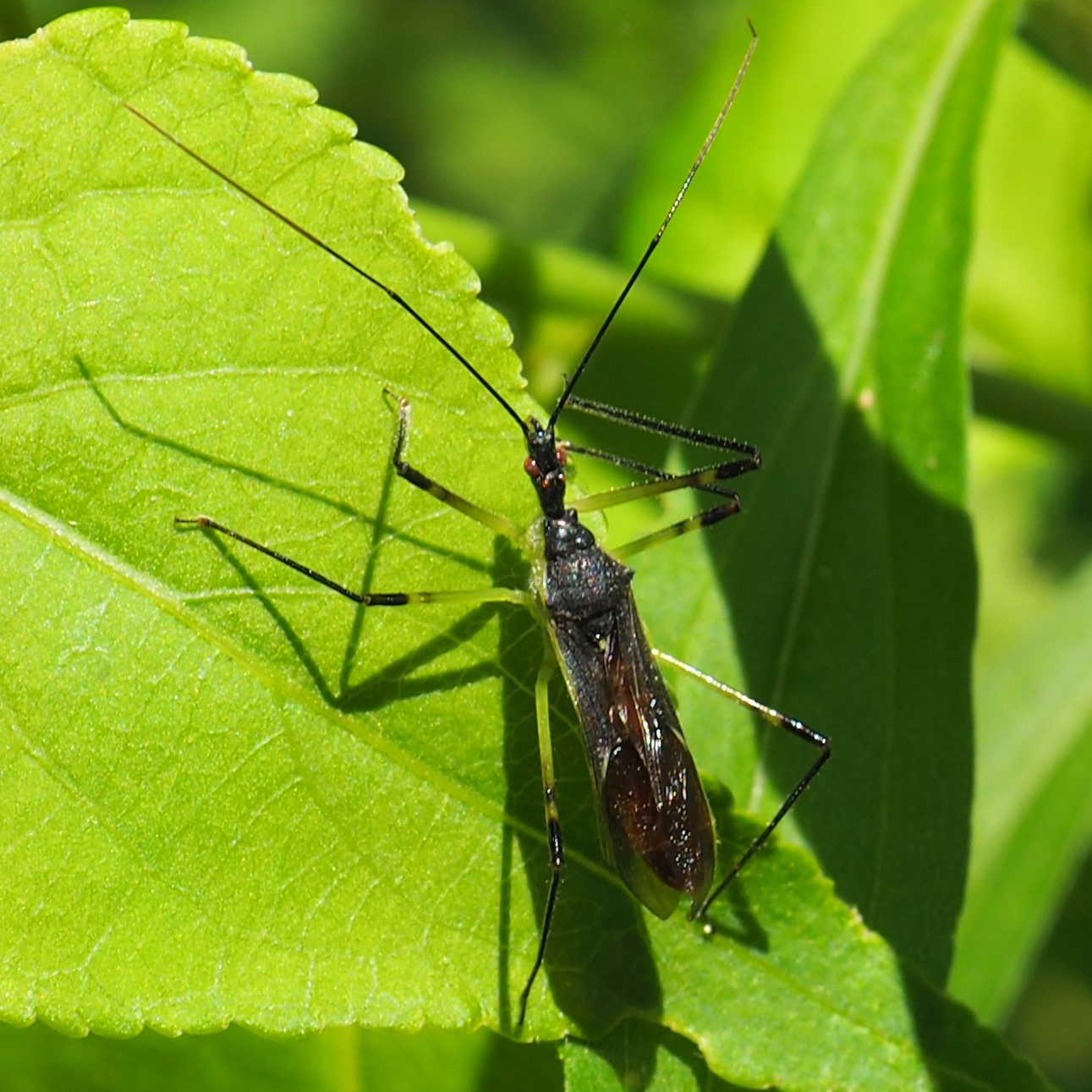
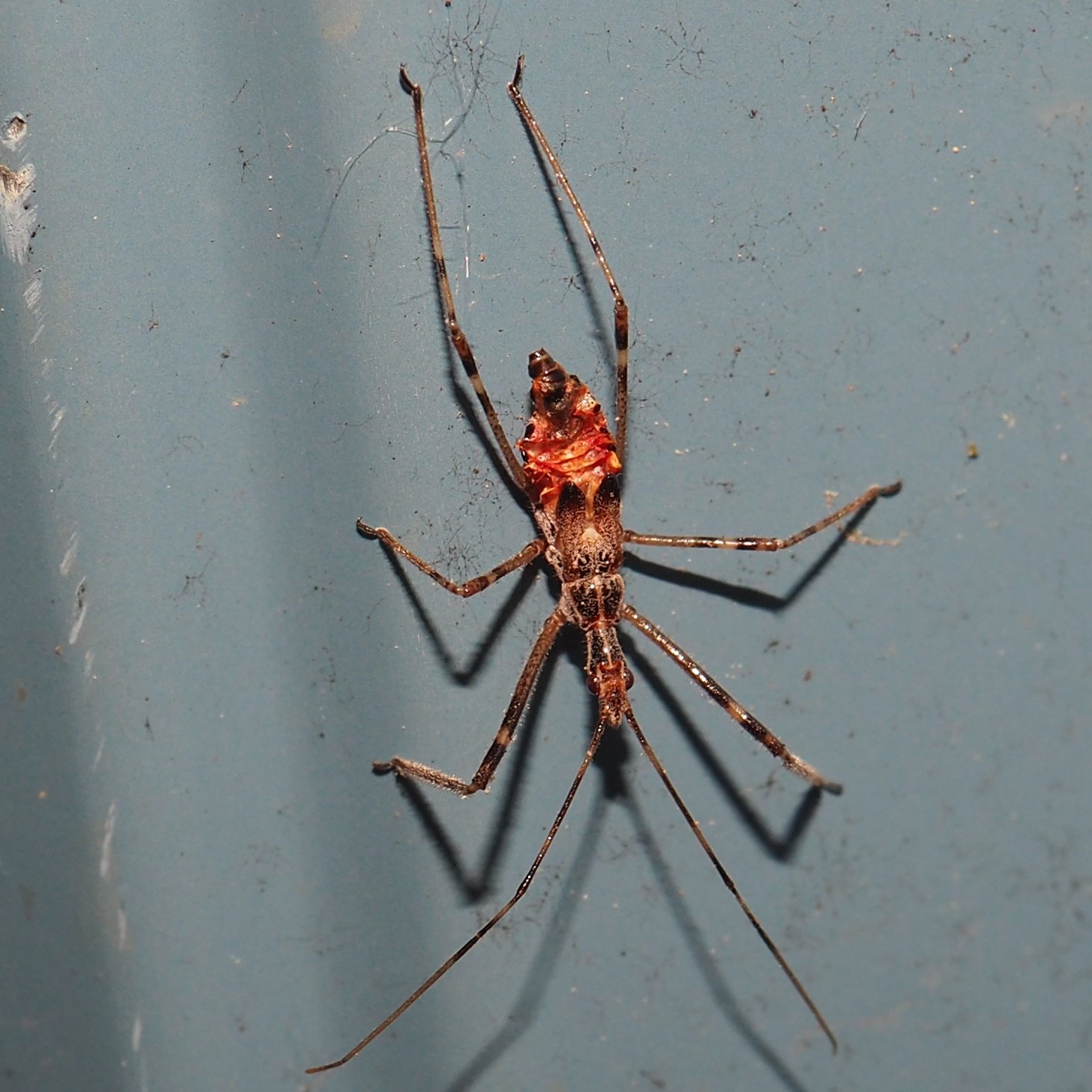
First here is a Lace Bug. Then a very young Leafhopper nymph, a cute little peppered one. Then comes Agallia quadripunctata (4 dots).
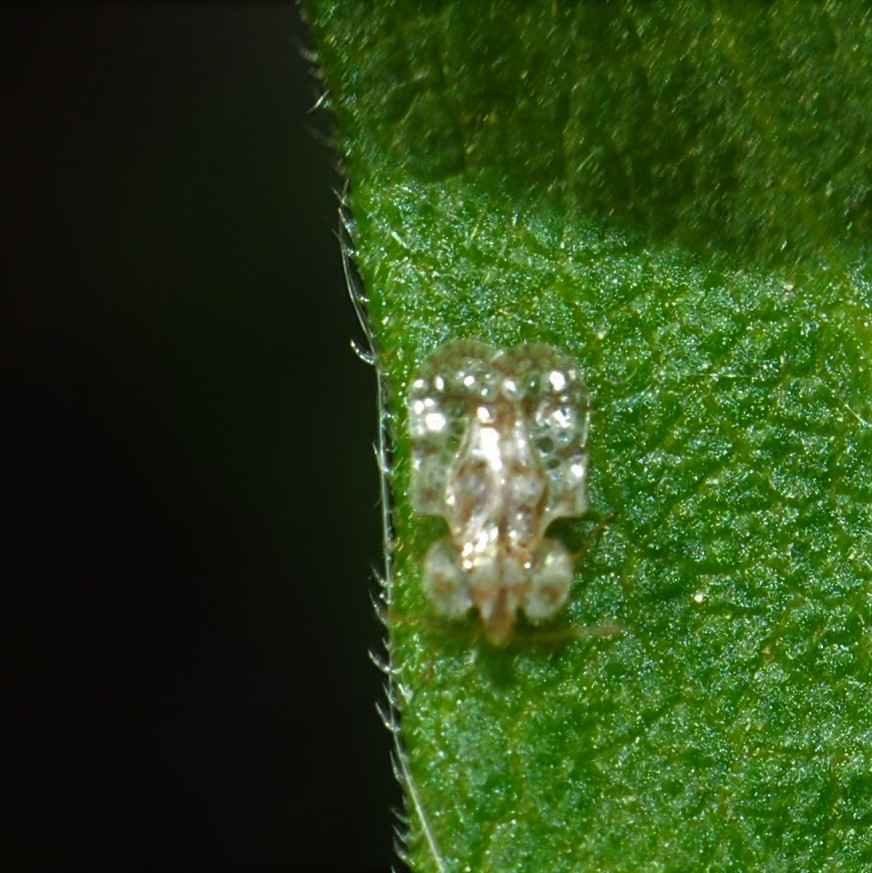
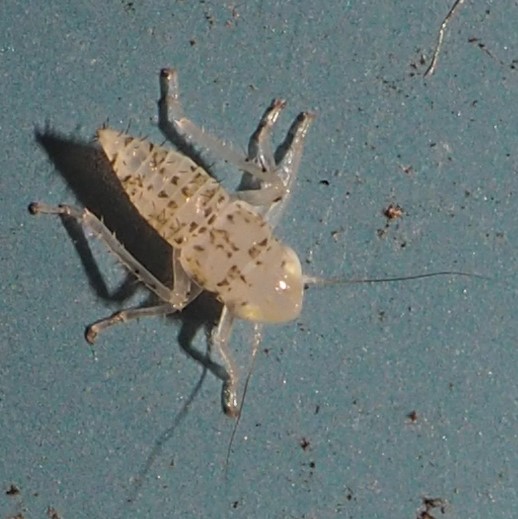
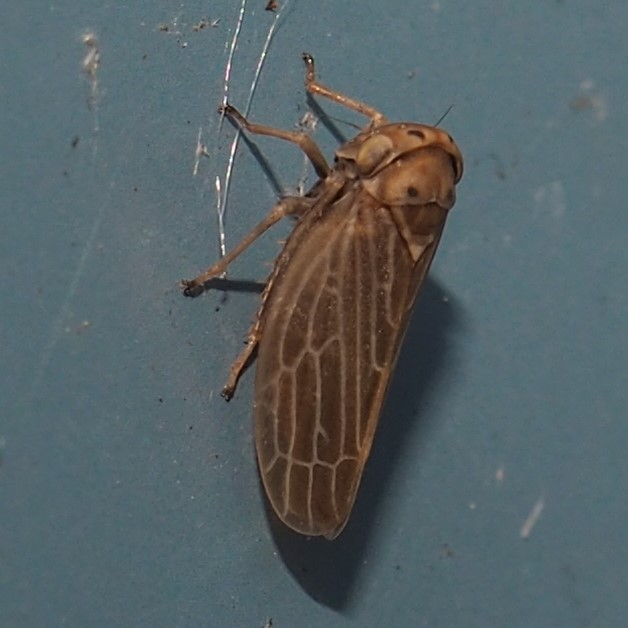
Here we have the nymph of one of the Aphrodes genus of Leafhoppers. Then most people's favorite hopper, the red-and-blue Graphocephala. Third is a mystery to me, let's call it a White Leafhopper.
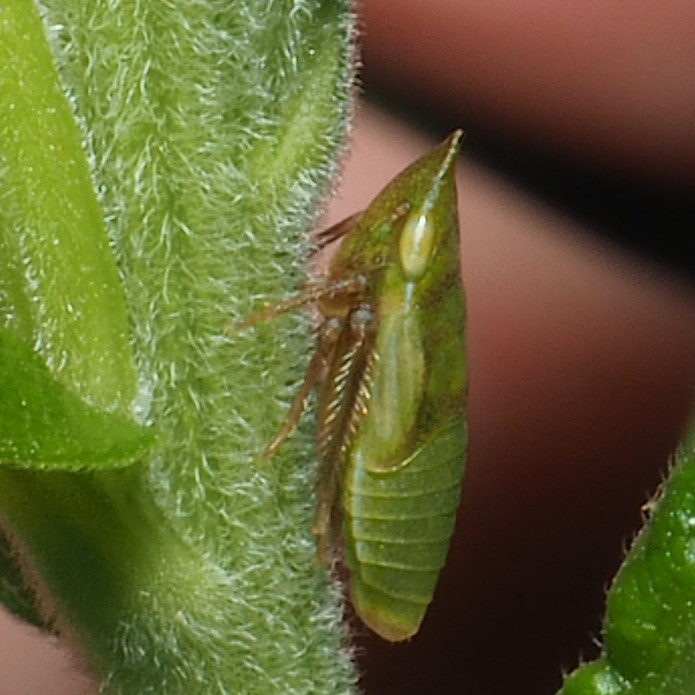
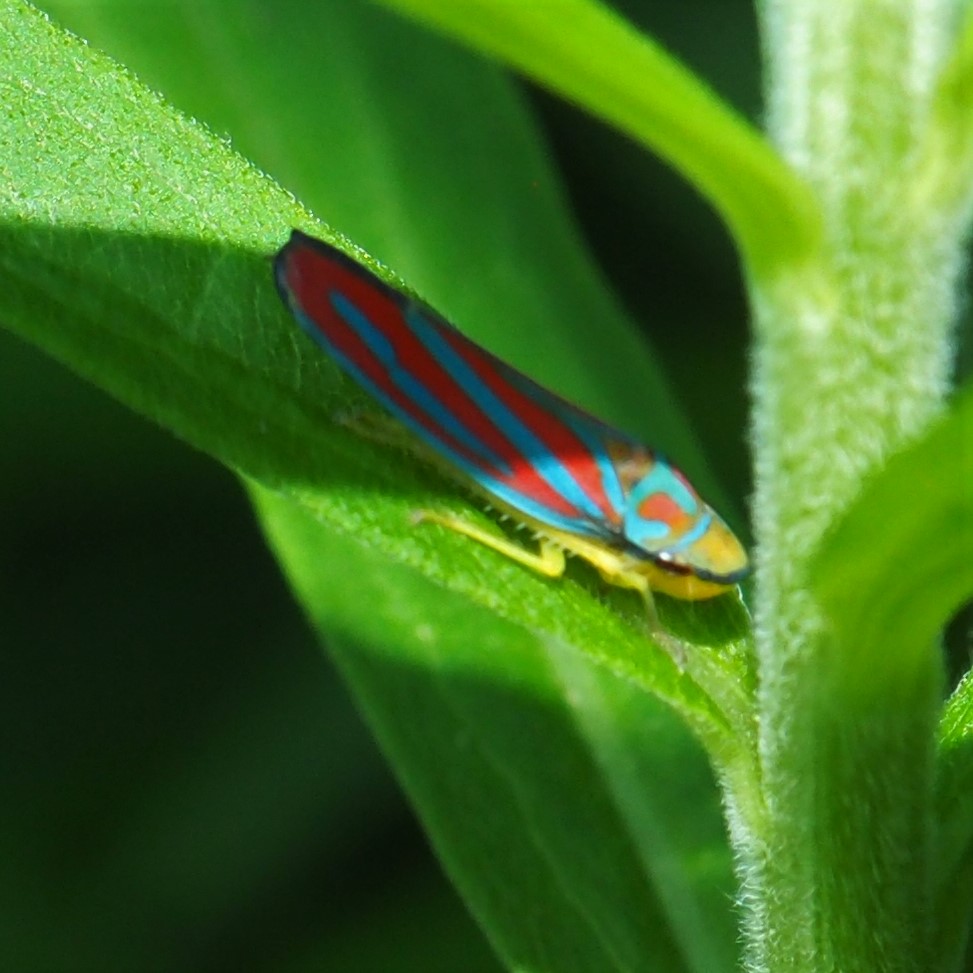
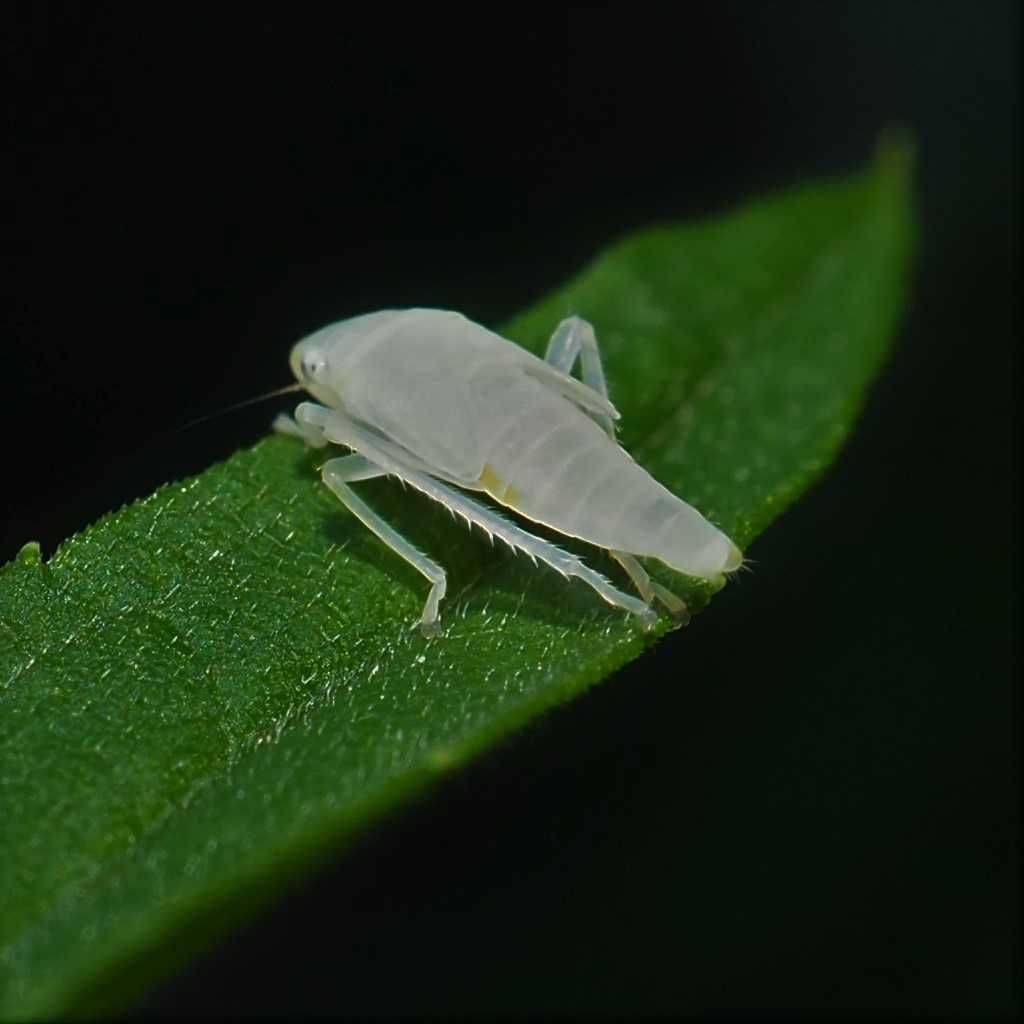
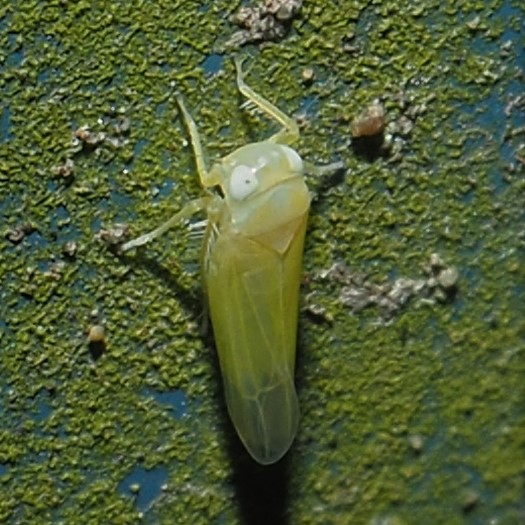
There were quite a number of other Bugs. Some Plant Bugs, like this one that was ID'ed by Jean-francois Roch and Wongun Kim as a Plant Bug of genus Phytocoris. I thought it was one of the most lovely Bug nymphs I've ever seen. Second is called an Obscure Plant Bug (that's its name!). Third is another Bug nymph, a green one.

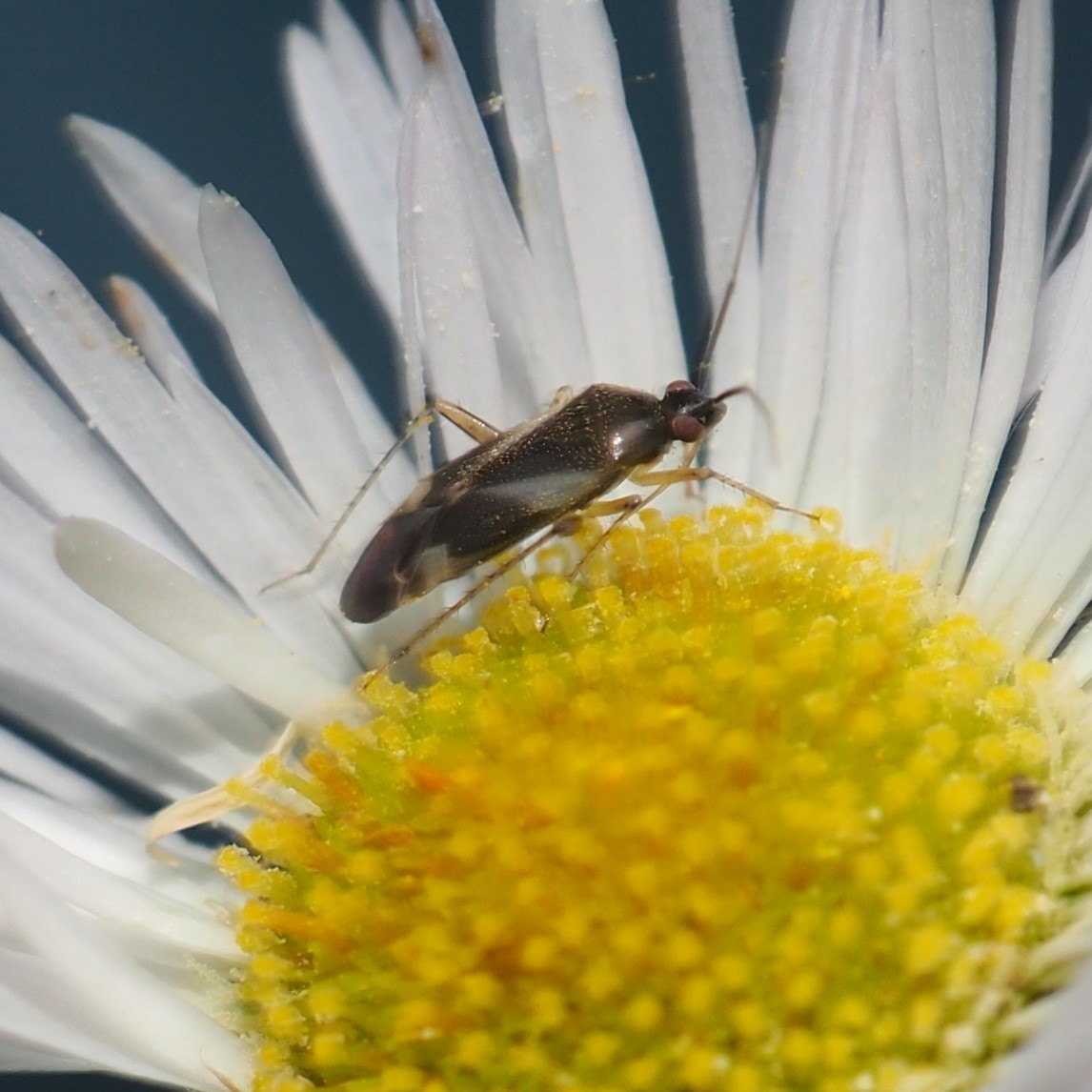
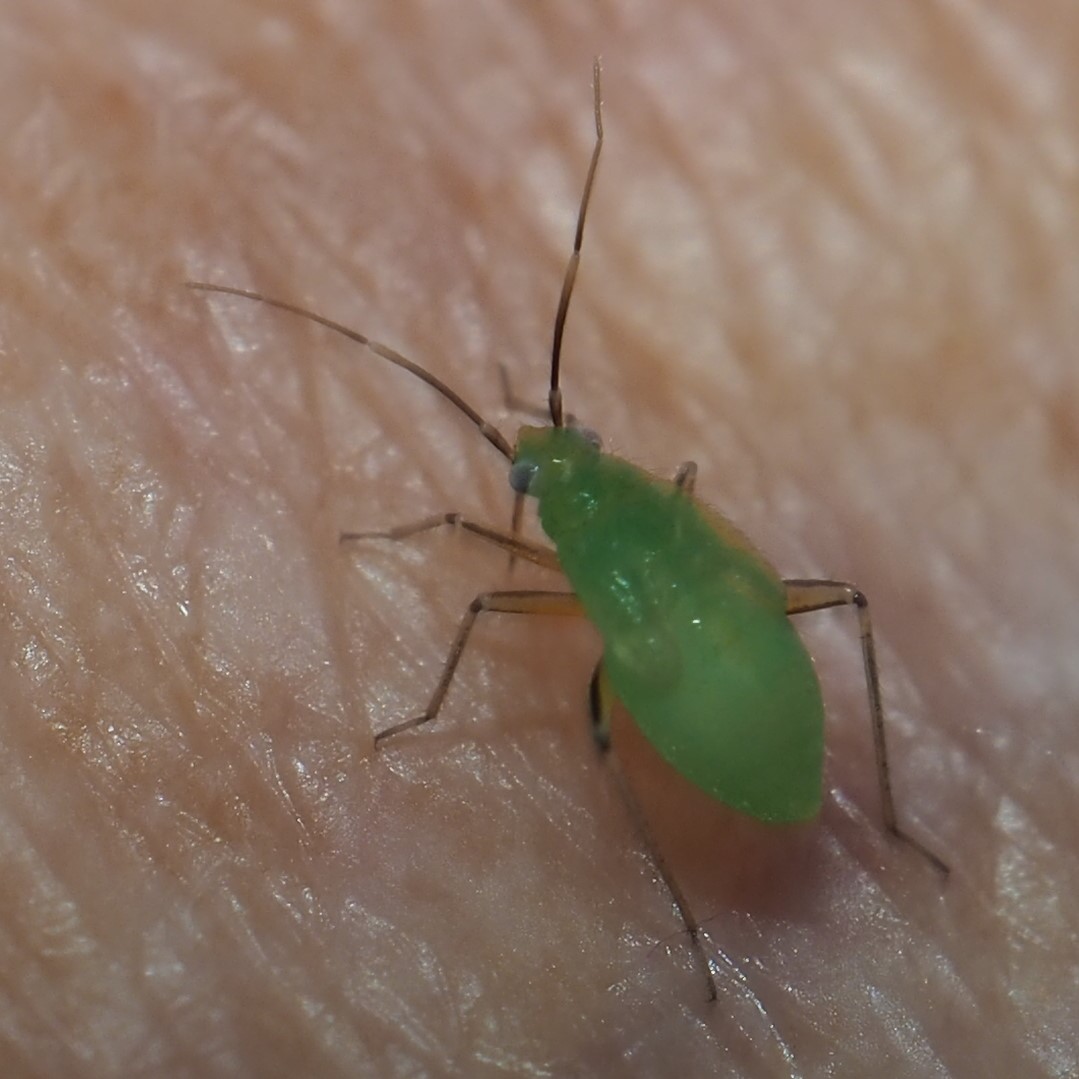
Here is a Plant Bug called Taedia scrupea. Lovely, isn't it? I took this picture from about five feet away. And since we are on a red roll, here is something that might be an Aphid or a Plant Bug. Fourth is the Orchard Spittle Bug.
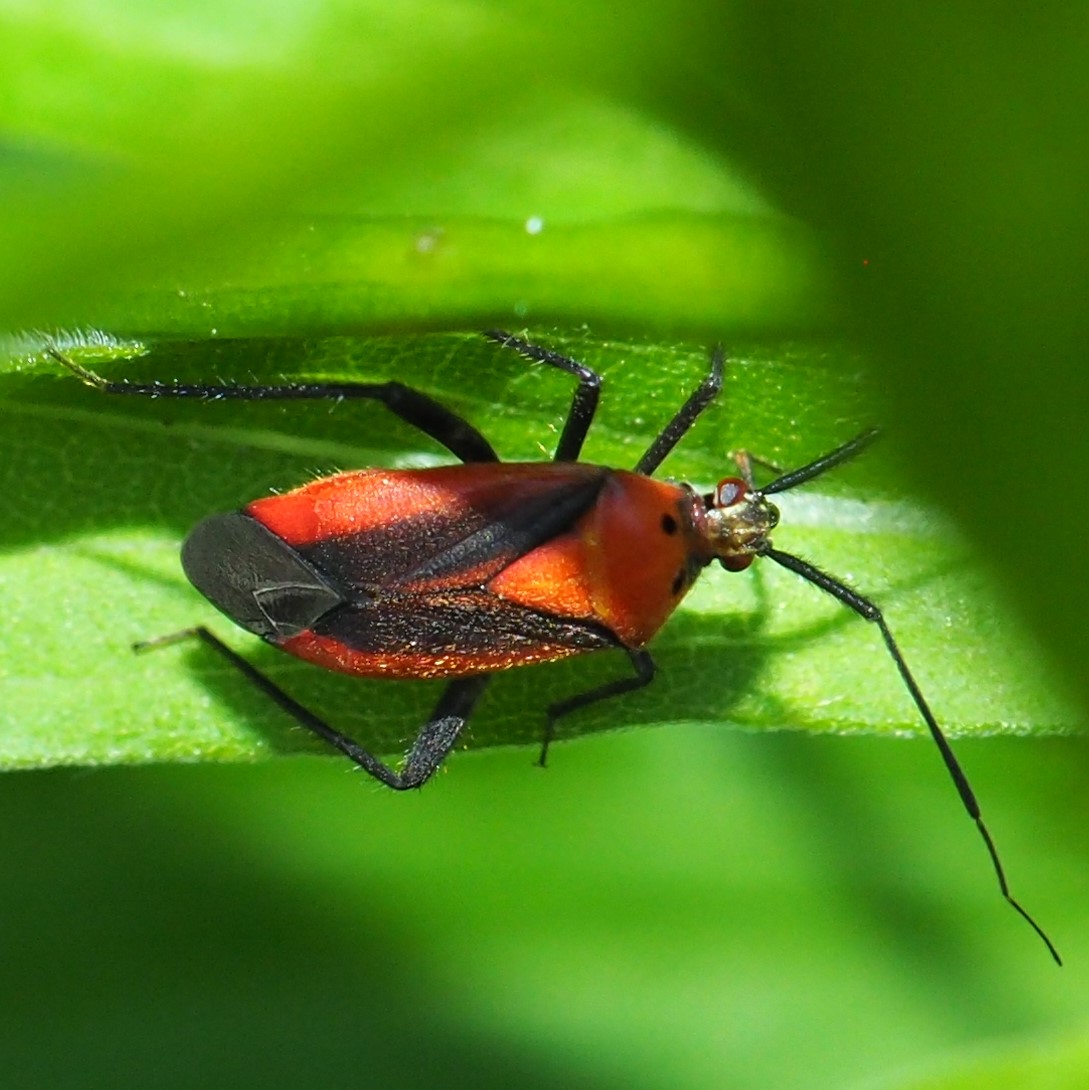
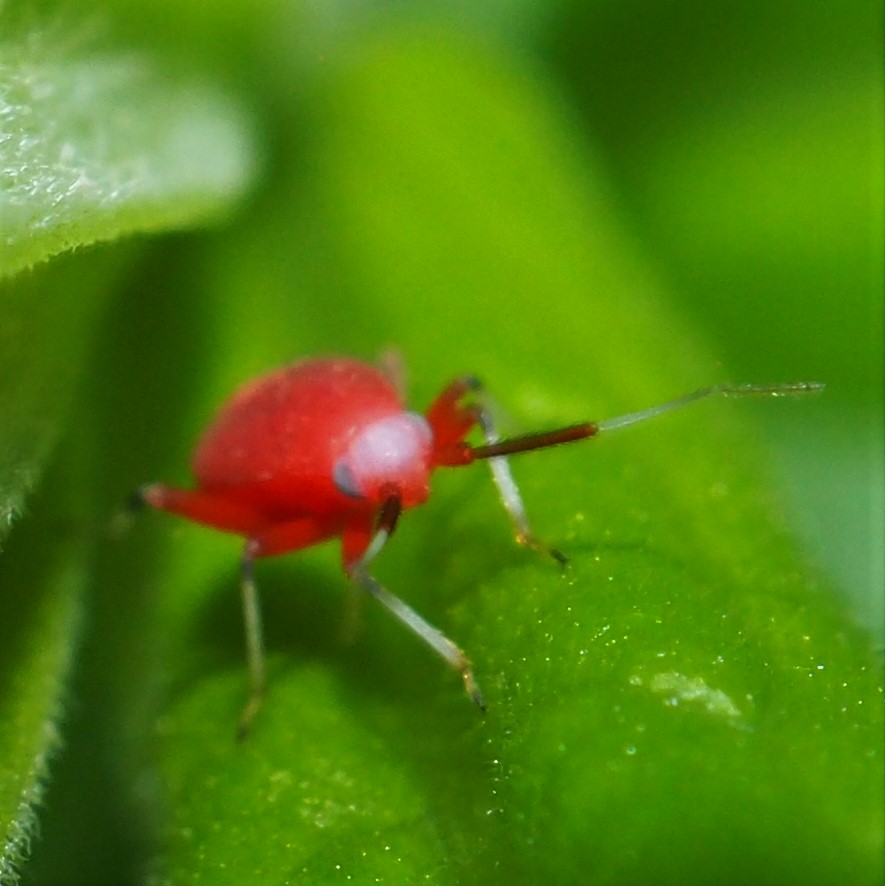
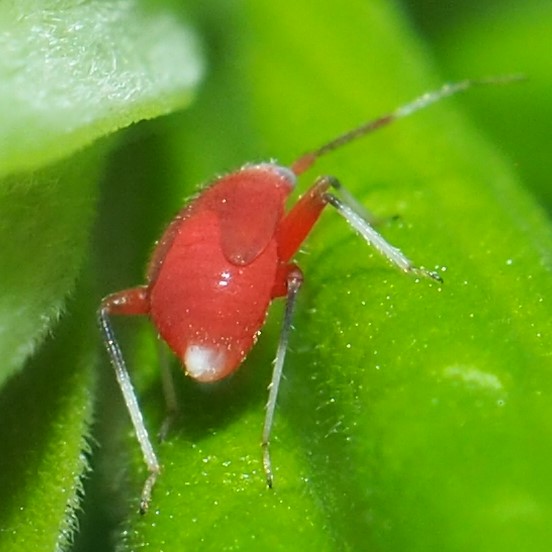
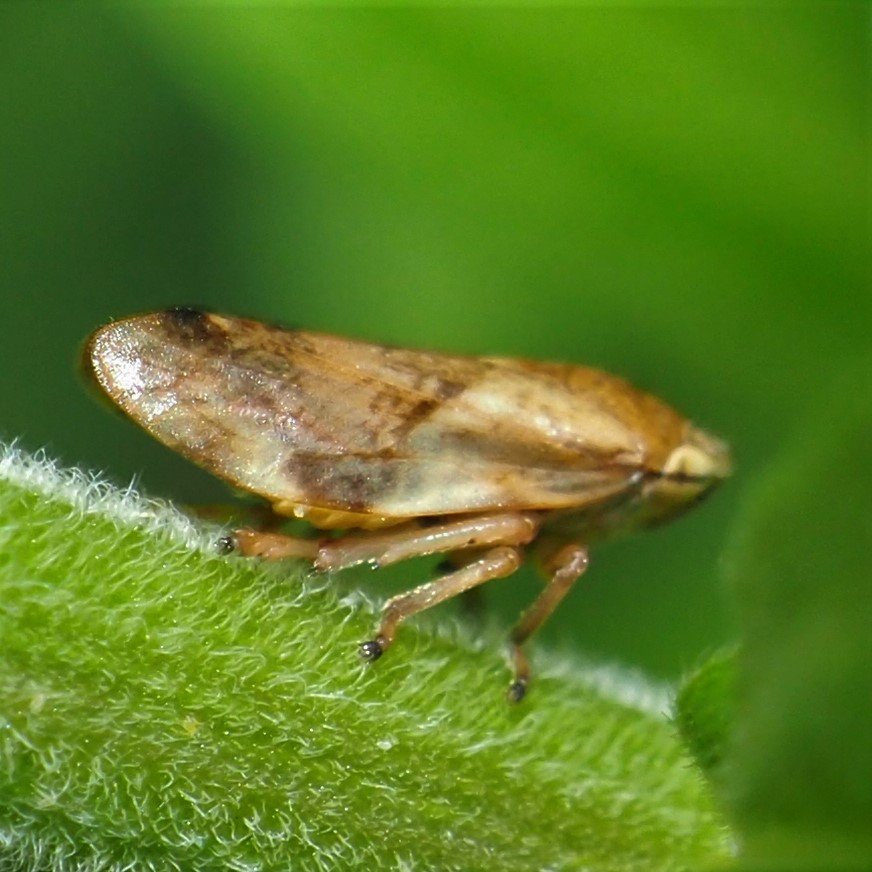
We already talked about the Treehoppers back in the section on the Ants. And so we can move on to other things. Like this Damselfly, one of the Spreadwings. And Surprise! Remember how hard the fish have been working to make more little fishies. This week for the first time I saw among the many many tadpoles a few little fish like this one. The third picture shows a comparison in the sizes of baby fish and the smaller tadpoles.
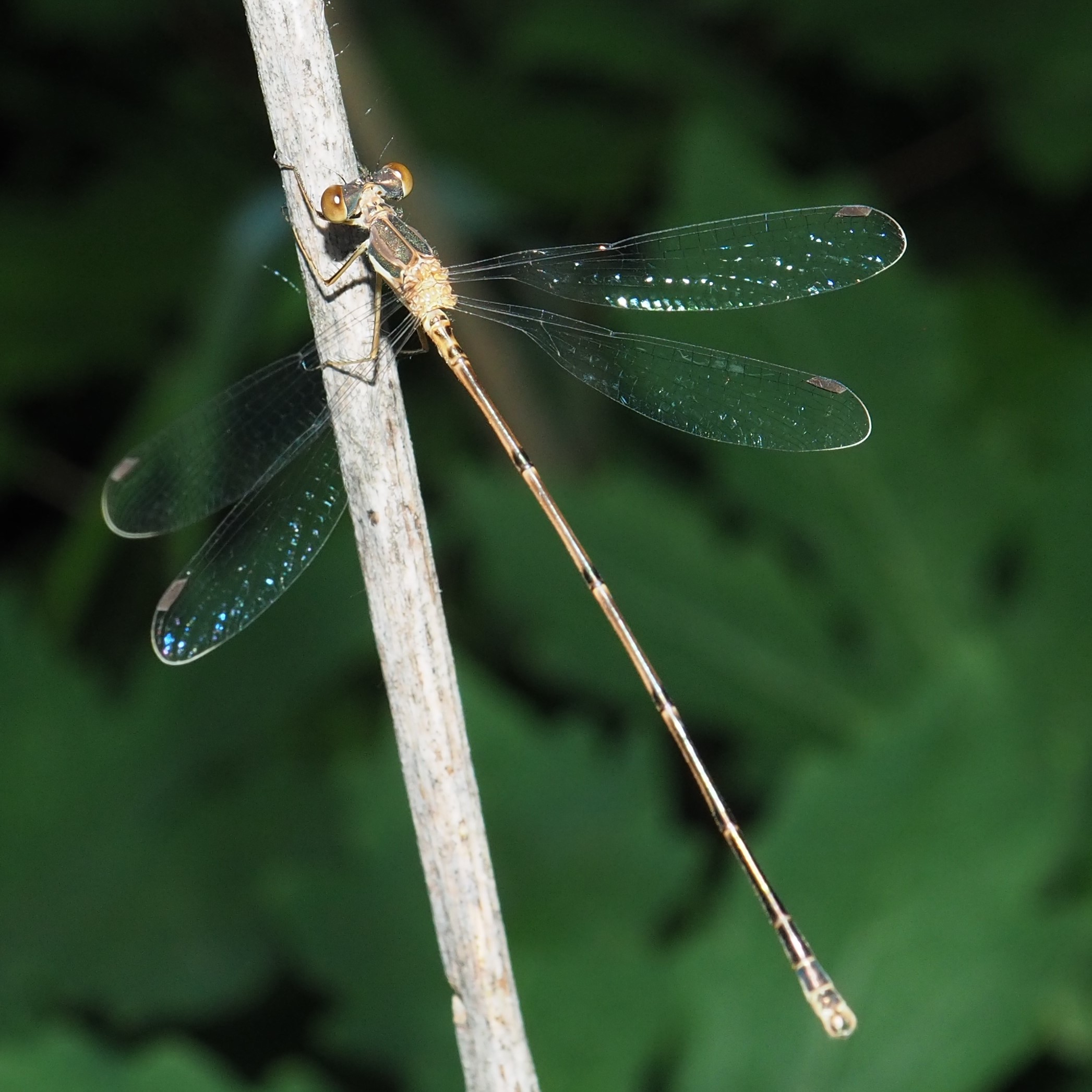

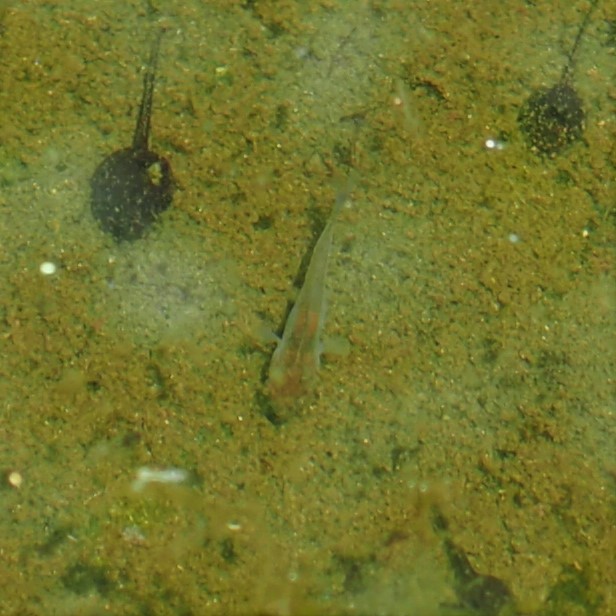
On to the Flies! Here is a small one but has nice iridescence. But for real iridescence, get a load of this Long-legged Fly. (Wouldn't you think they would have a much nicer name for this beauty? It seems to have found breakfast... Third is a Picture-winged Fly.
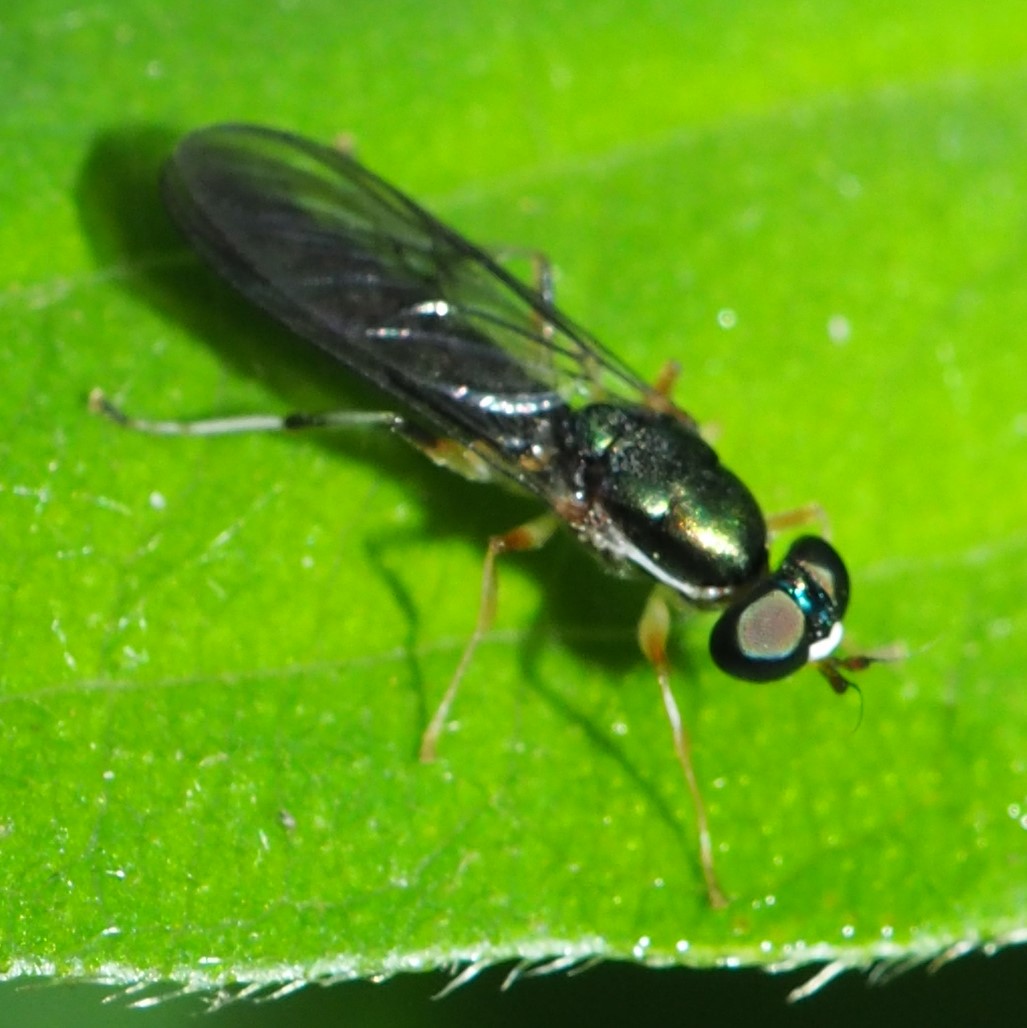
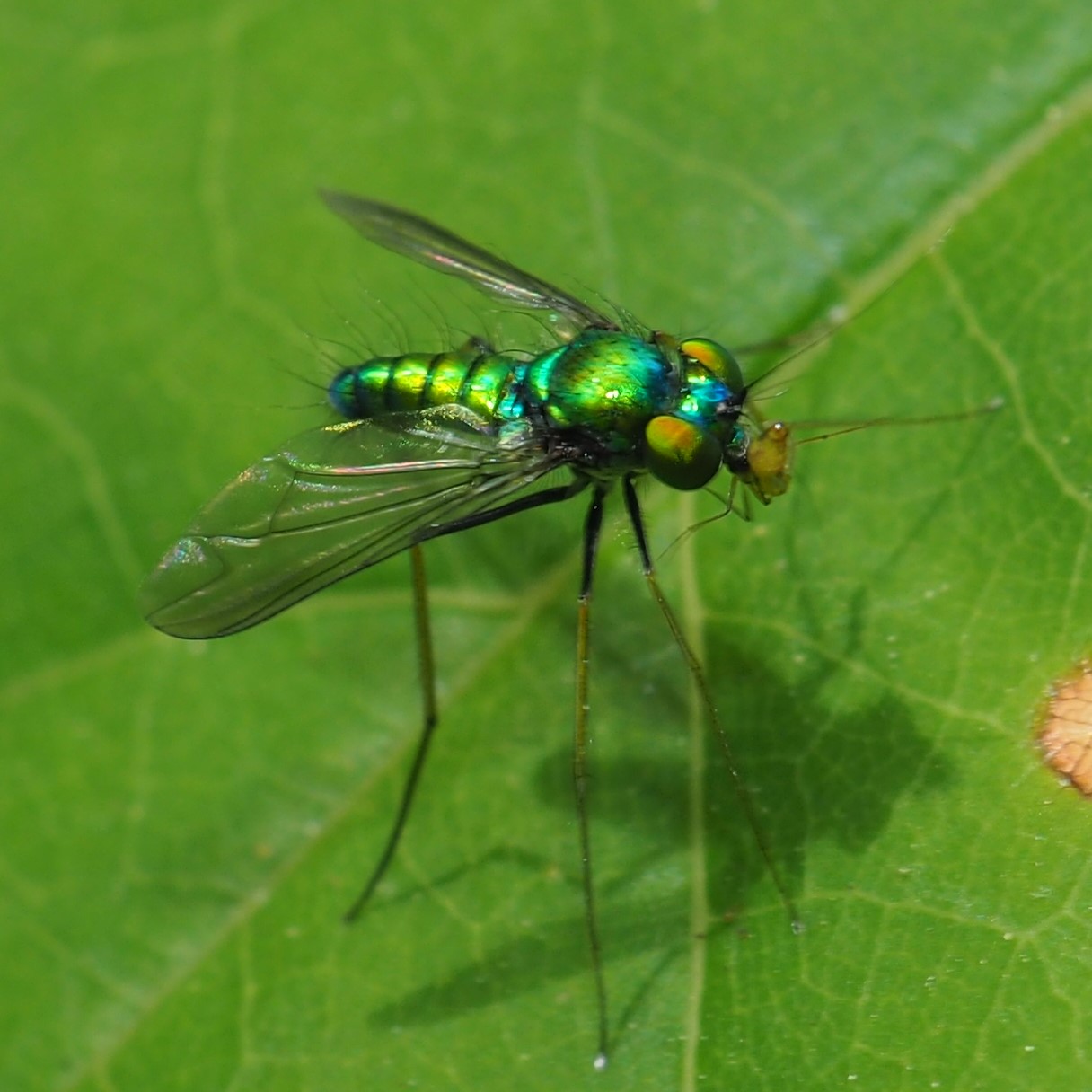
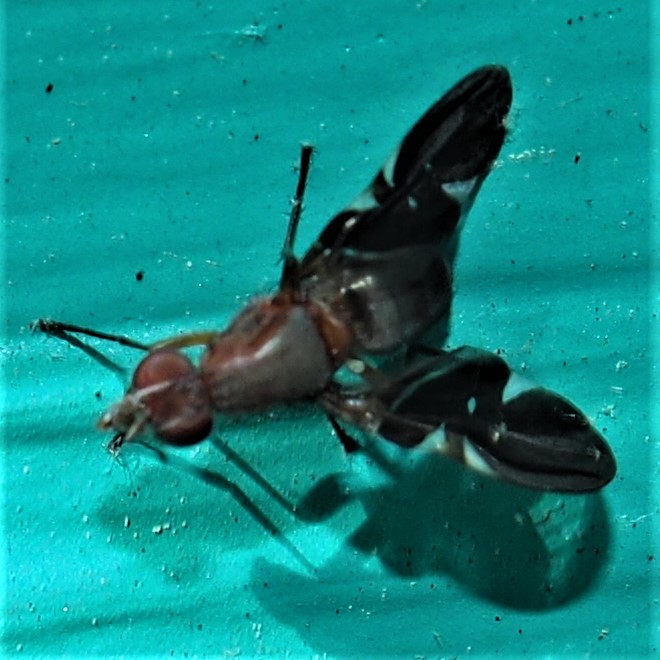
This first one looks a lot like the long thin one (first one in the last row), but it is actually a Robber Fly. Second seems to be something in the Euthycera genus, but there is only one species (E. arcuata) available in North America and this one's thorax doesn't look totally right. I'm not sure what the last one is, but it is a very small fly.
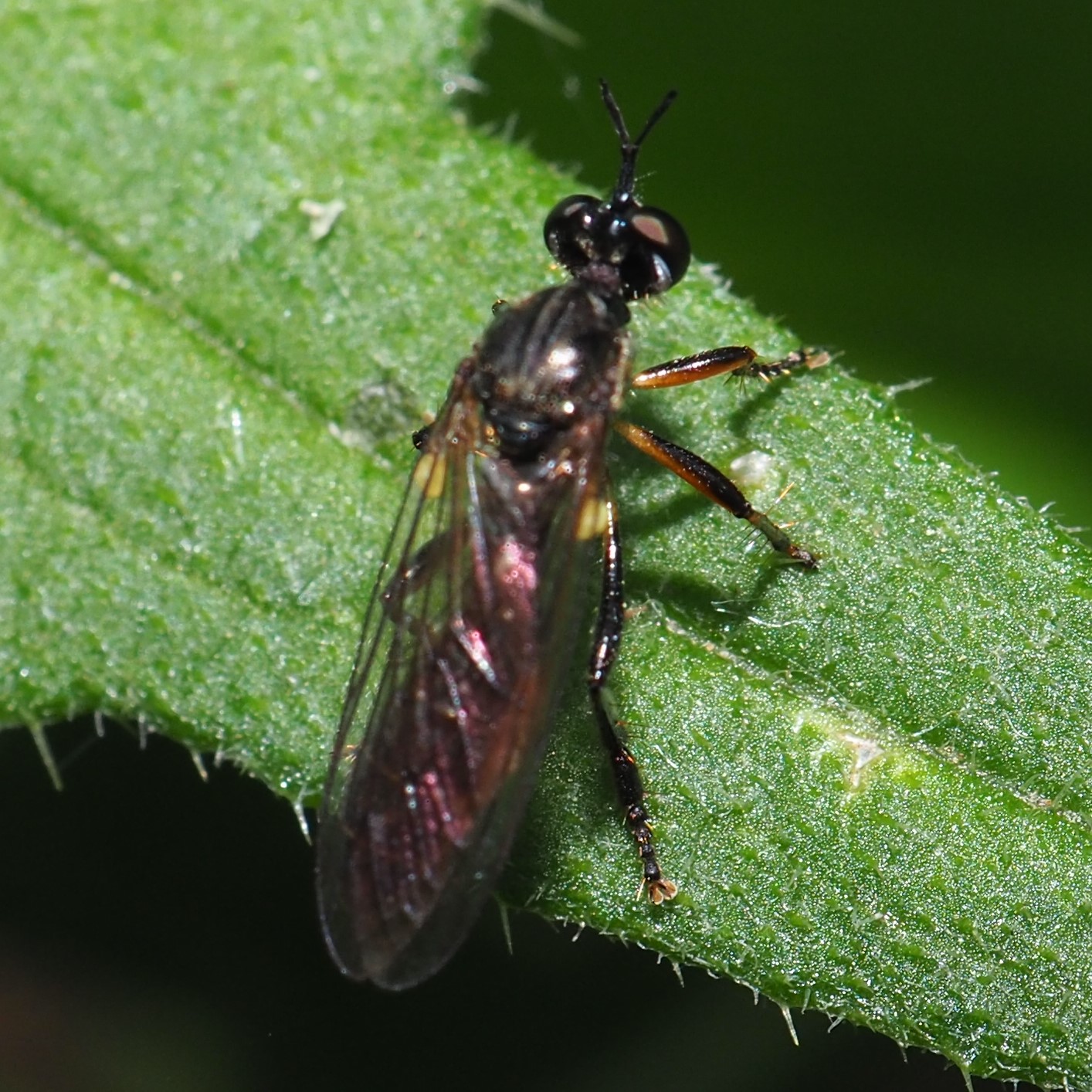
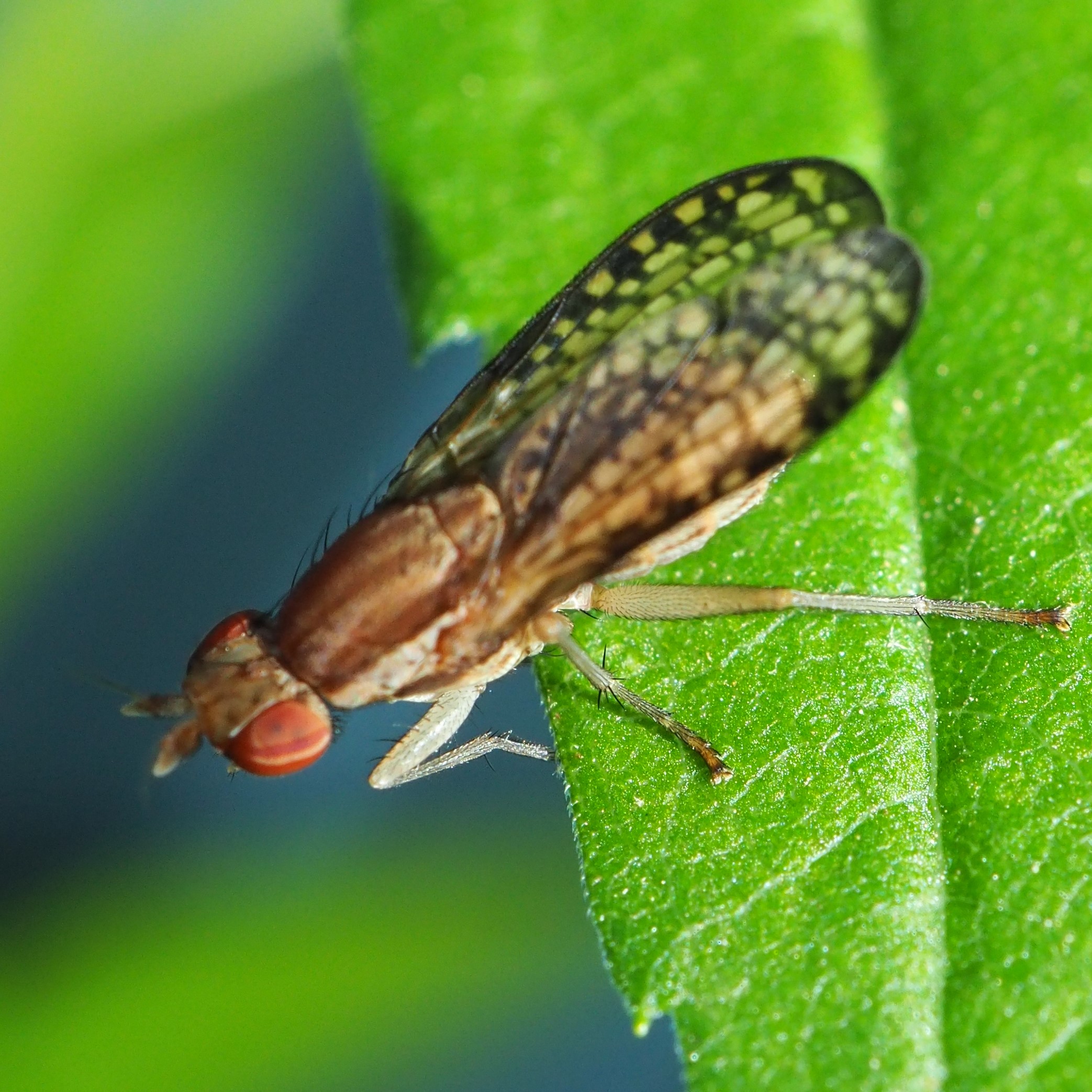
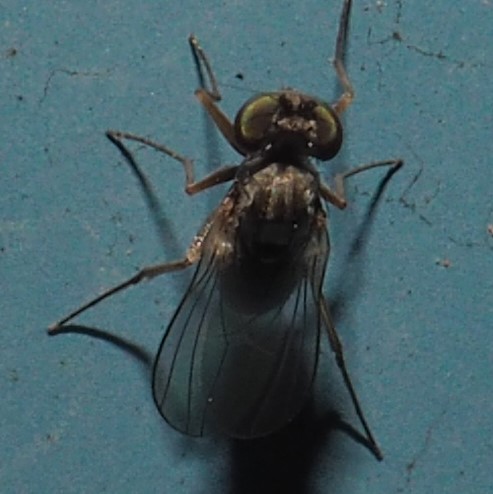
There was one more of these REAL long-legged flies, Rainieria antennaepes. The second big grey one was across the pond from me and couldn't be enticed over to shooting distance.
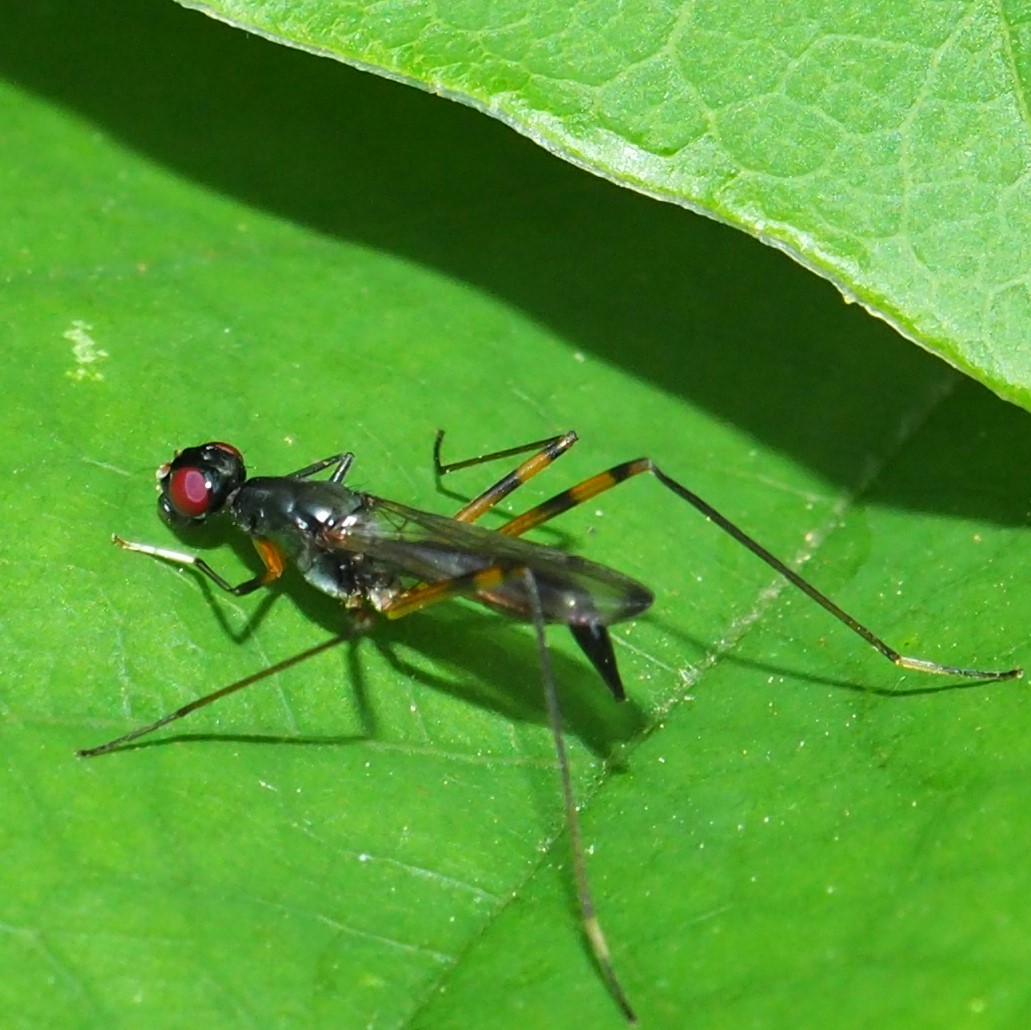
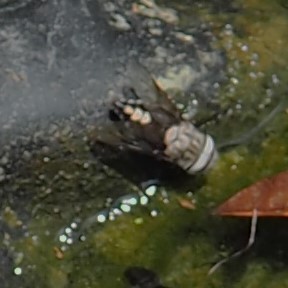
Here's Froggy! I'm pretty sure this is a newer Froggy, not the chatty one from last year. But on Friday, Kathleen Seidl came over and we sat 6 feet apart around the pond. Suddenly Froggy seemed excited and while we were talking, F. decided to chime in. I have a witness! He filled in several spaces between our talking. Here he is with some Toad tadpole pals.
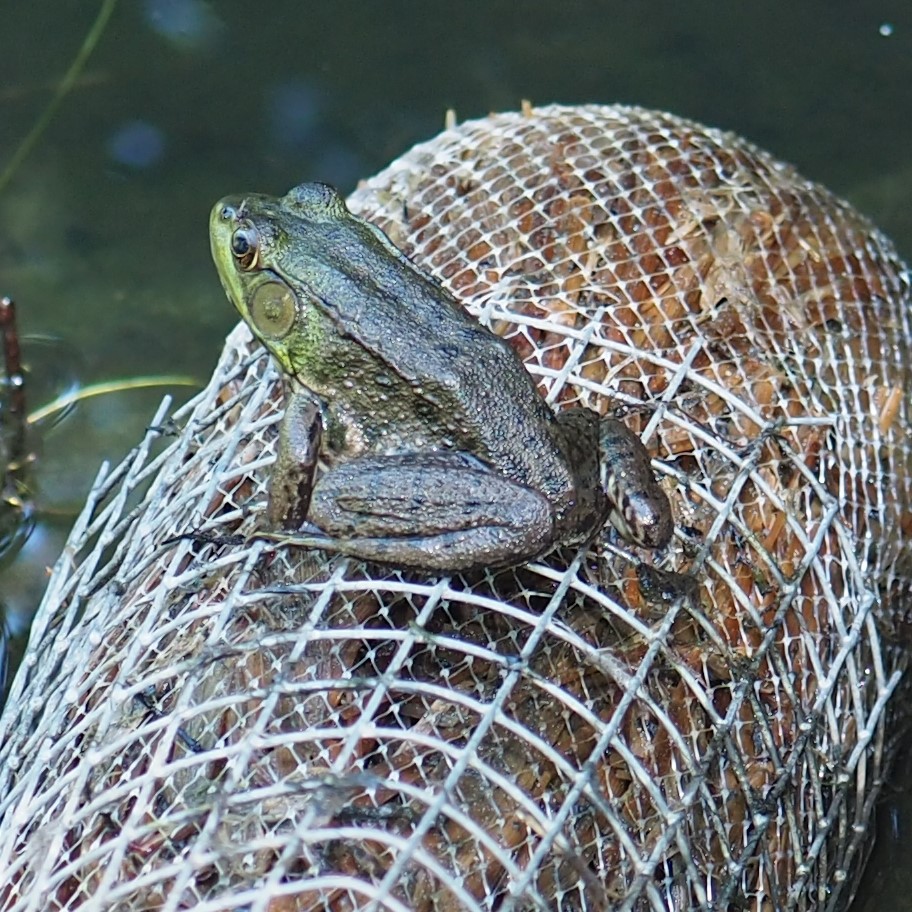
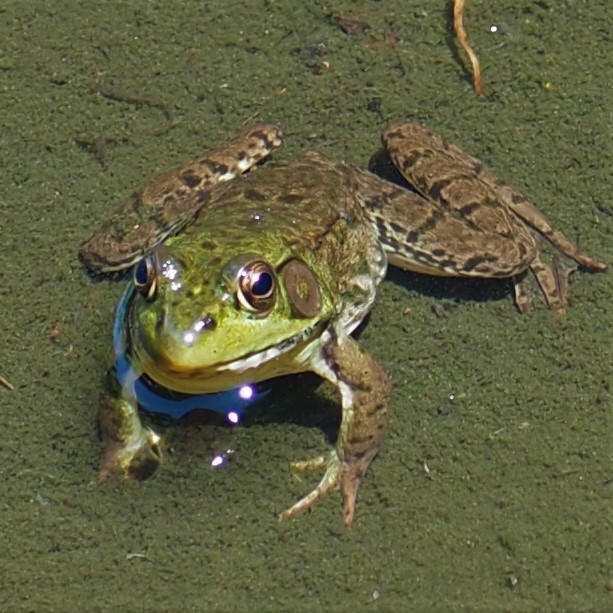

To make up for the few Flies, we did have a good showing of Moths. First is probably a Common Tan Wave Moth.
second is probably Homosetia fasciella, a member of Fungus Moths, Clothes Moths, and Allies. That's the info- I didn't make it up. Third seems to be a Double-striped Scoparia Moth.
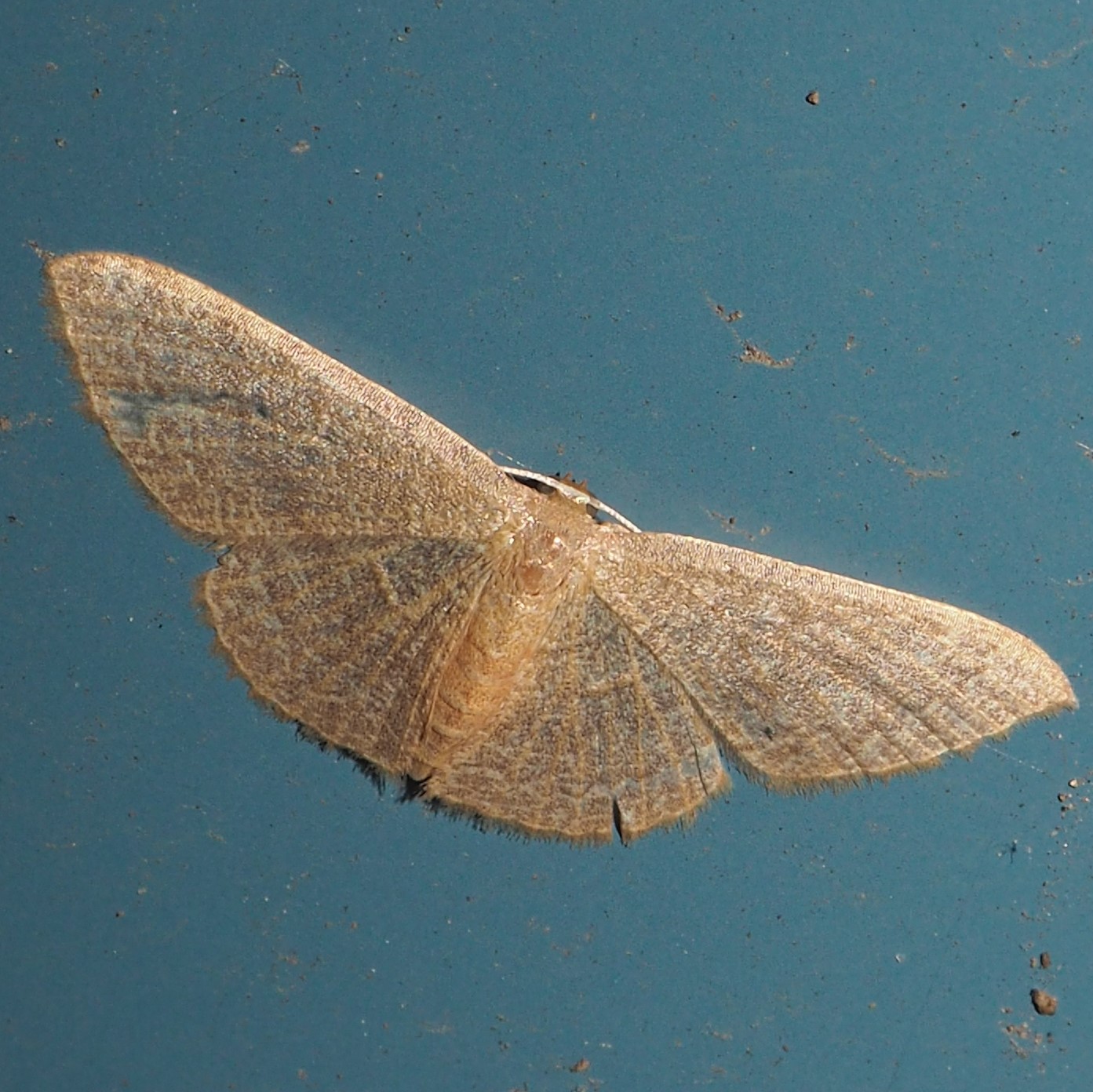
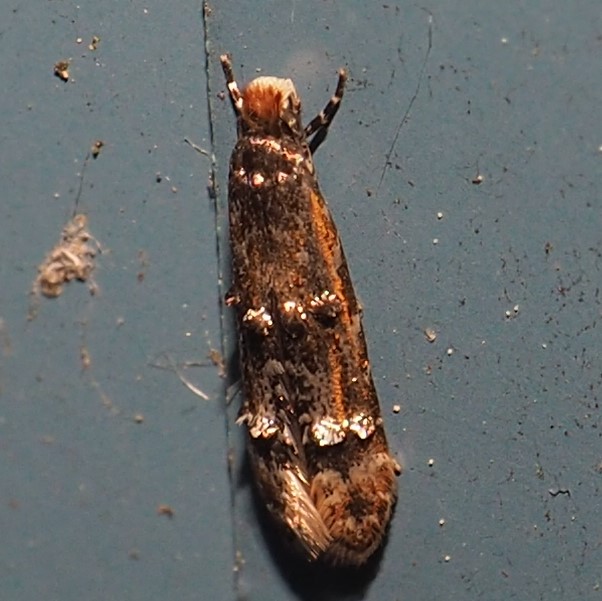
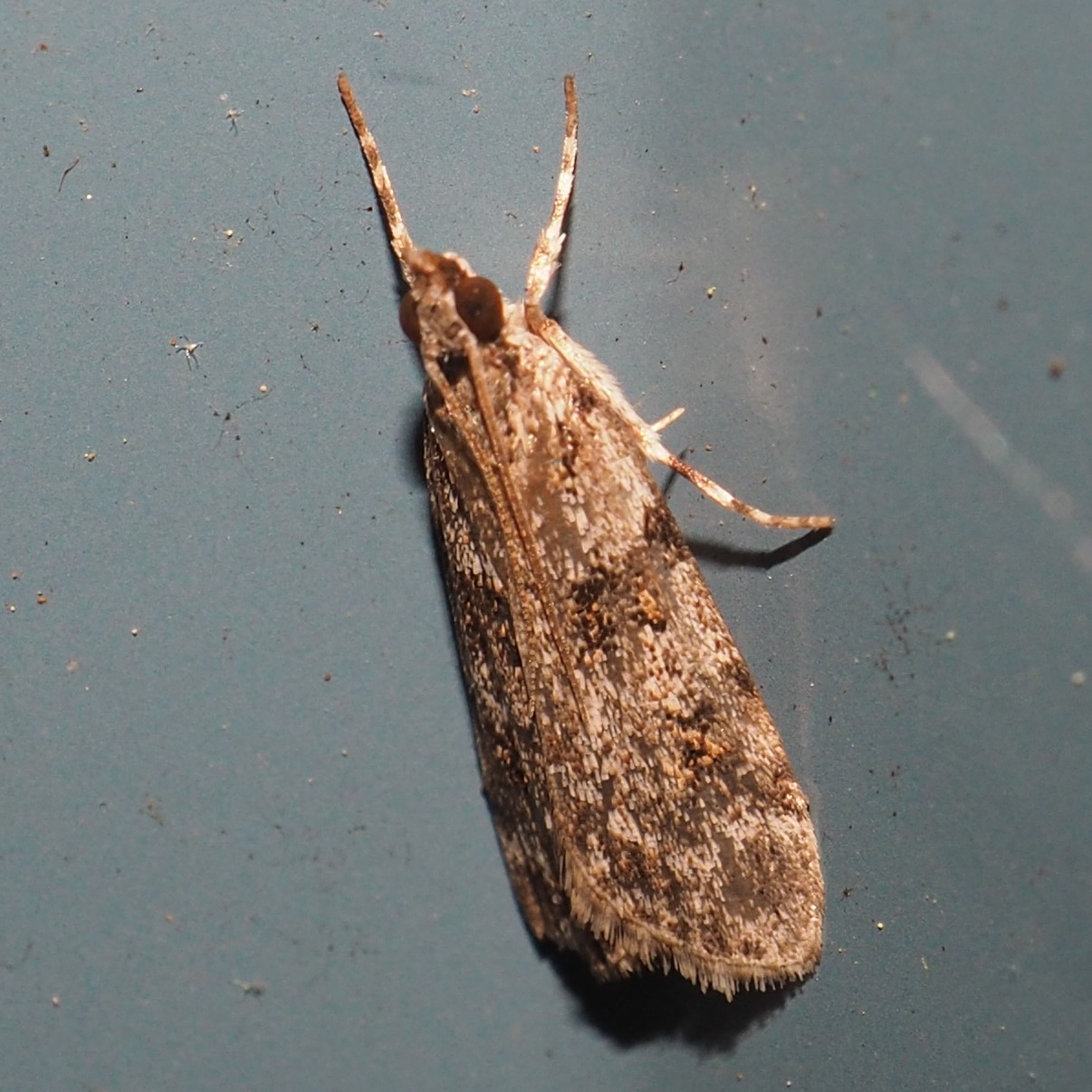
I thought at first that this was another of those Porcelain Grey Moths, but it was identified as a Tulip Tree Beauty. Second was sent in by Roberta Armstrong, who spotted these two Cecropia Moths mating. The Cecropia is one of the biggest and most beautiful of the Saturniid Moths. Thanks Bobbie!
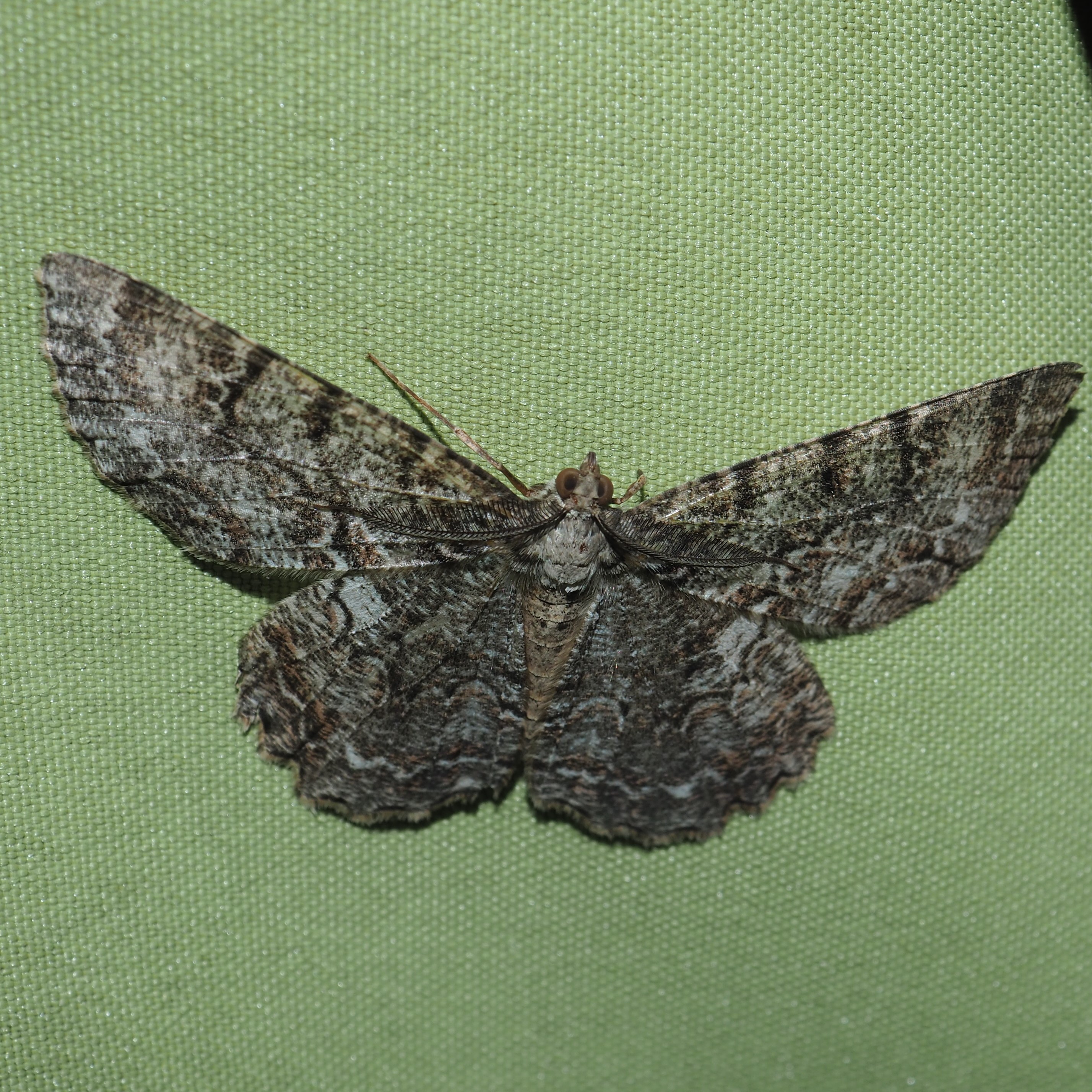
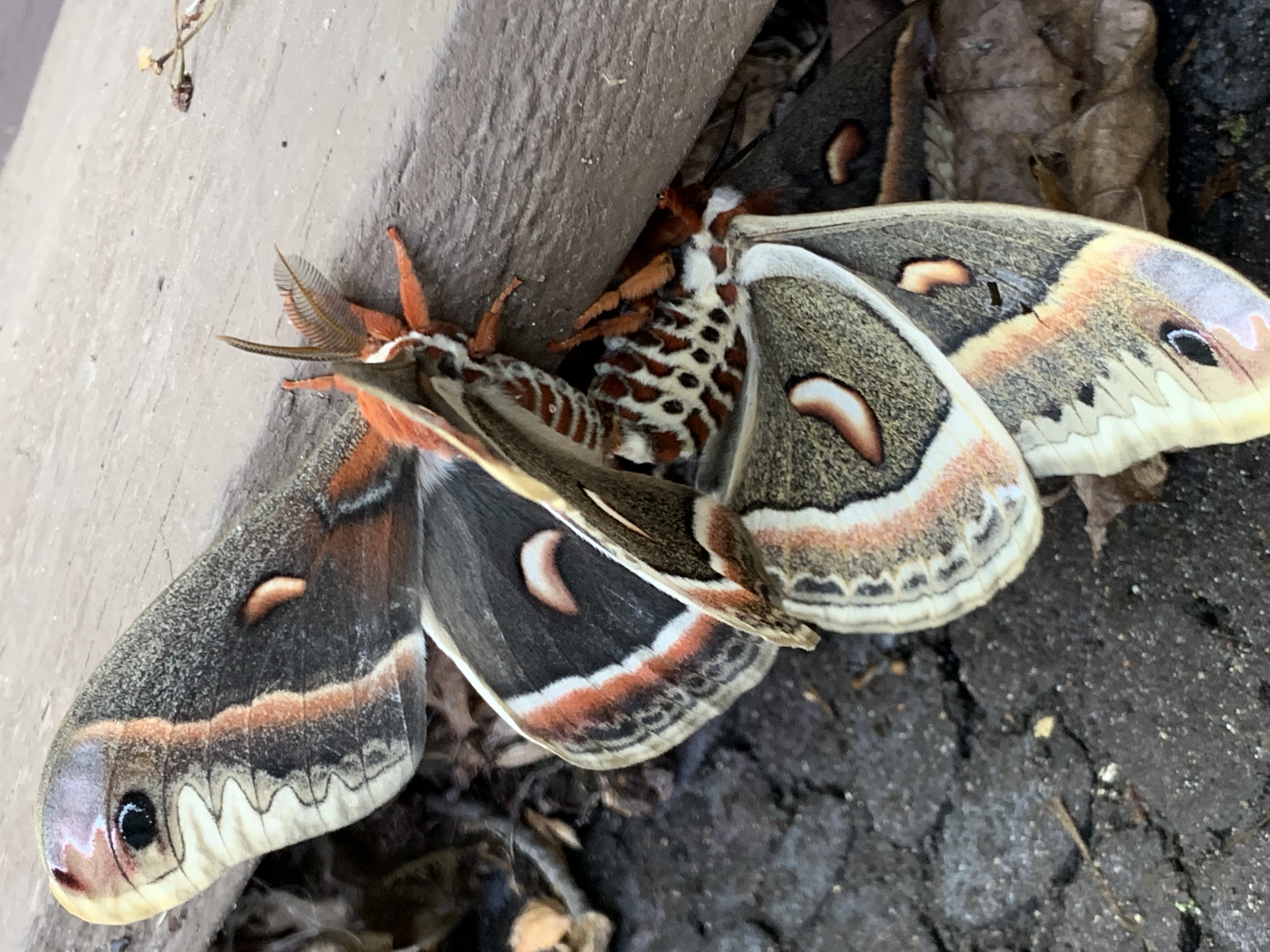
We're now down to the Spiders! There were of course the Cobwebbers, and we got a couple of new views of the Horned Parasitic Cobweavers.
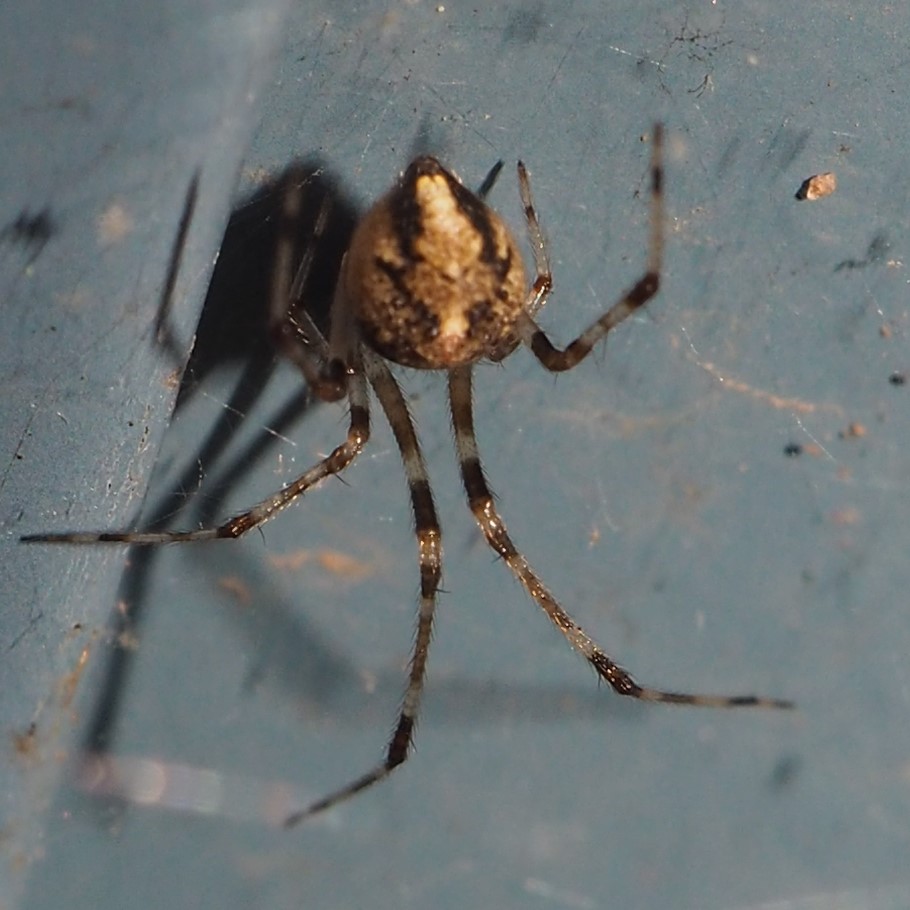

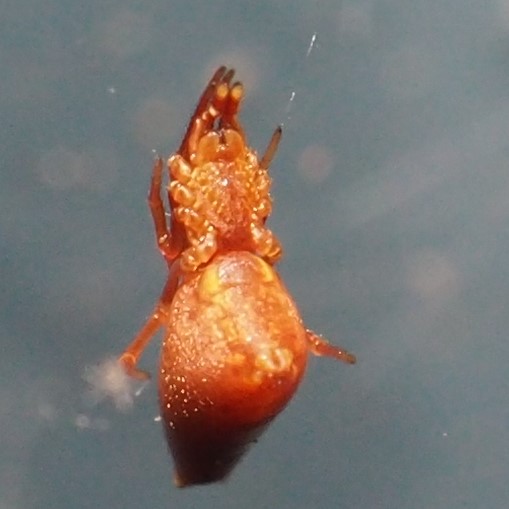
We had Three kinds of Jumping Spiders. This little one is probably something like Naphrys pulex. Second is one I don't recognize. But third is the Dimorphic Jumping Spider like the one that I found inside the kitchen door a few weeks back. Guess what. This one was also inside the kitchen door. I let her out again.
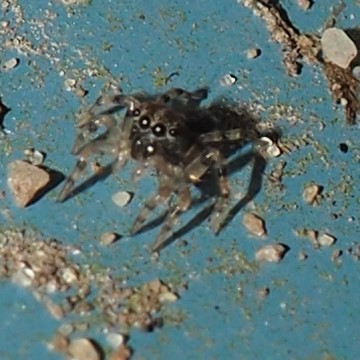

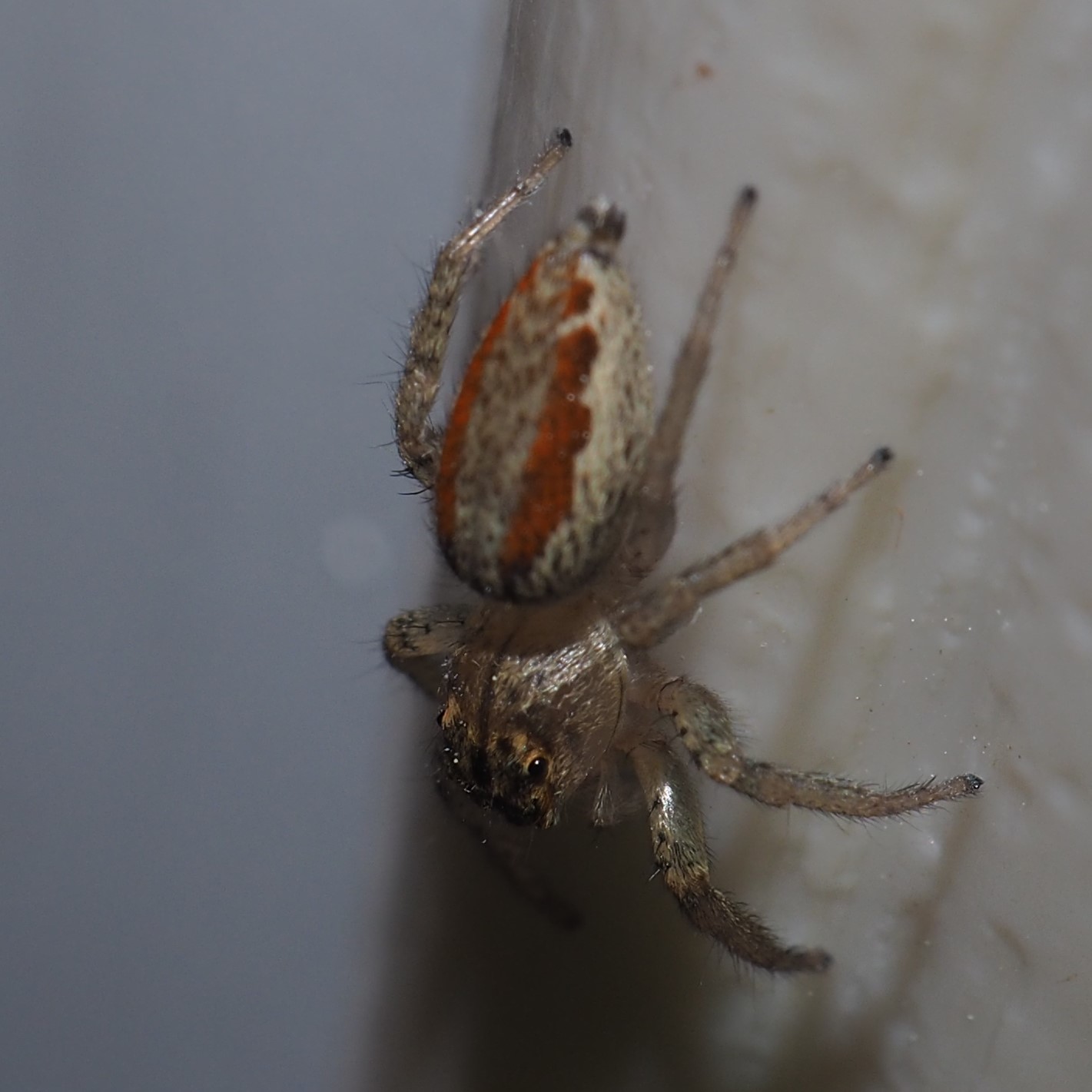
There was one that shouldn't have been a surprise since we had seen so many really juvenile ones, but this Orchard Orbweaver had placed its ORB right next to the Pump Filter that I've been working on. Here you see the fantastic web it wove, and the nearly adult Spider, one of the most spectacularly colored ones I know.
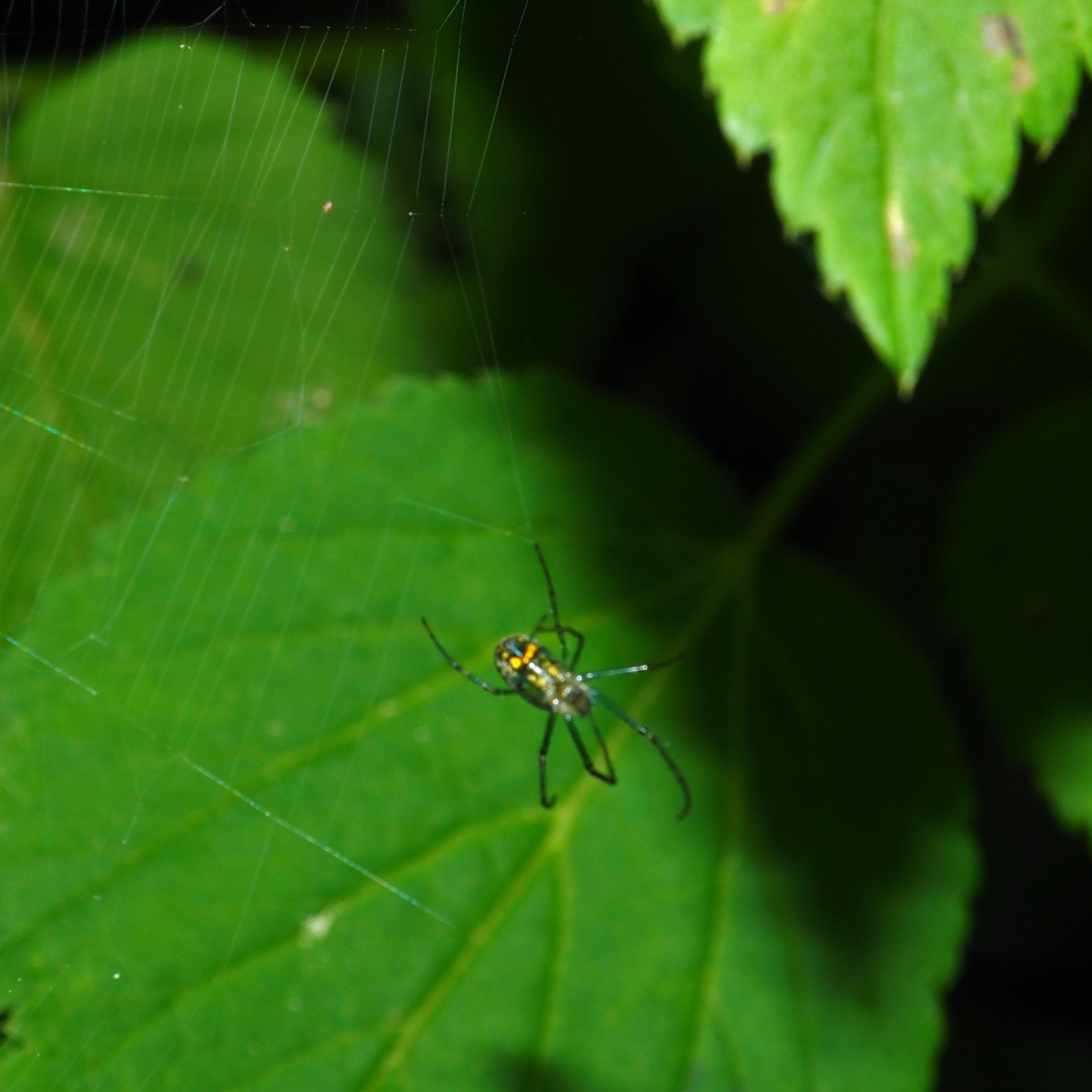
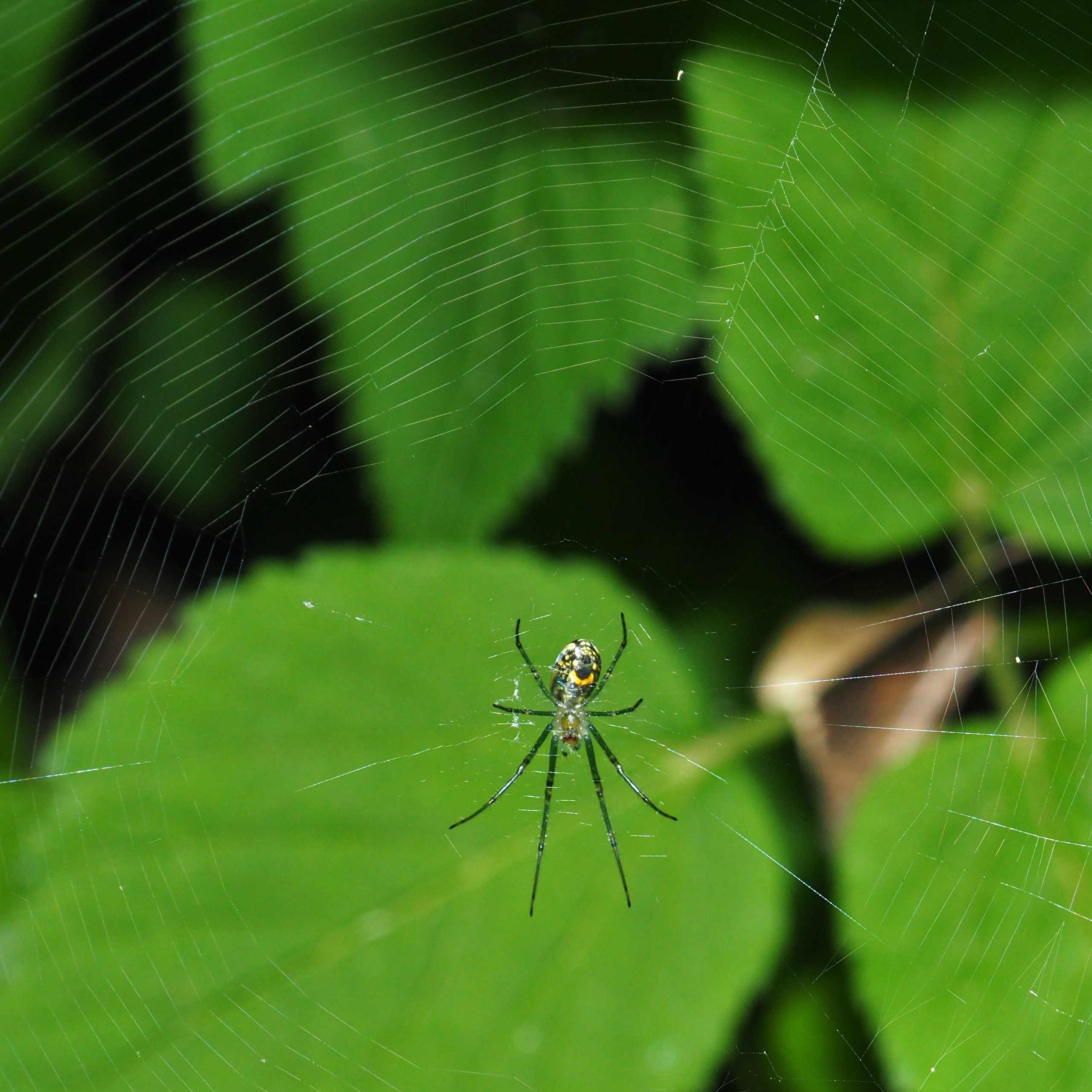
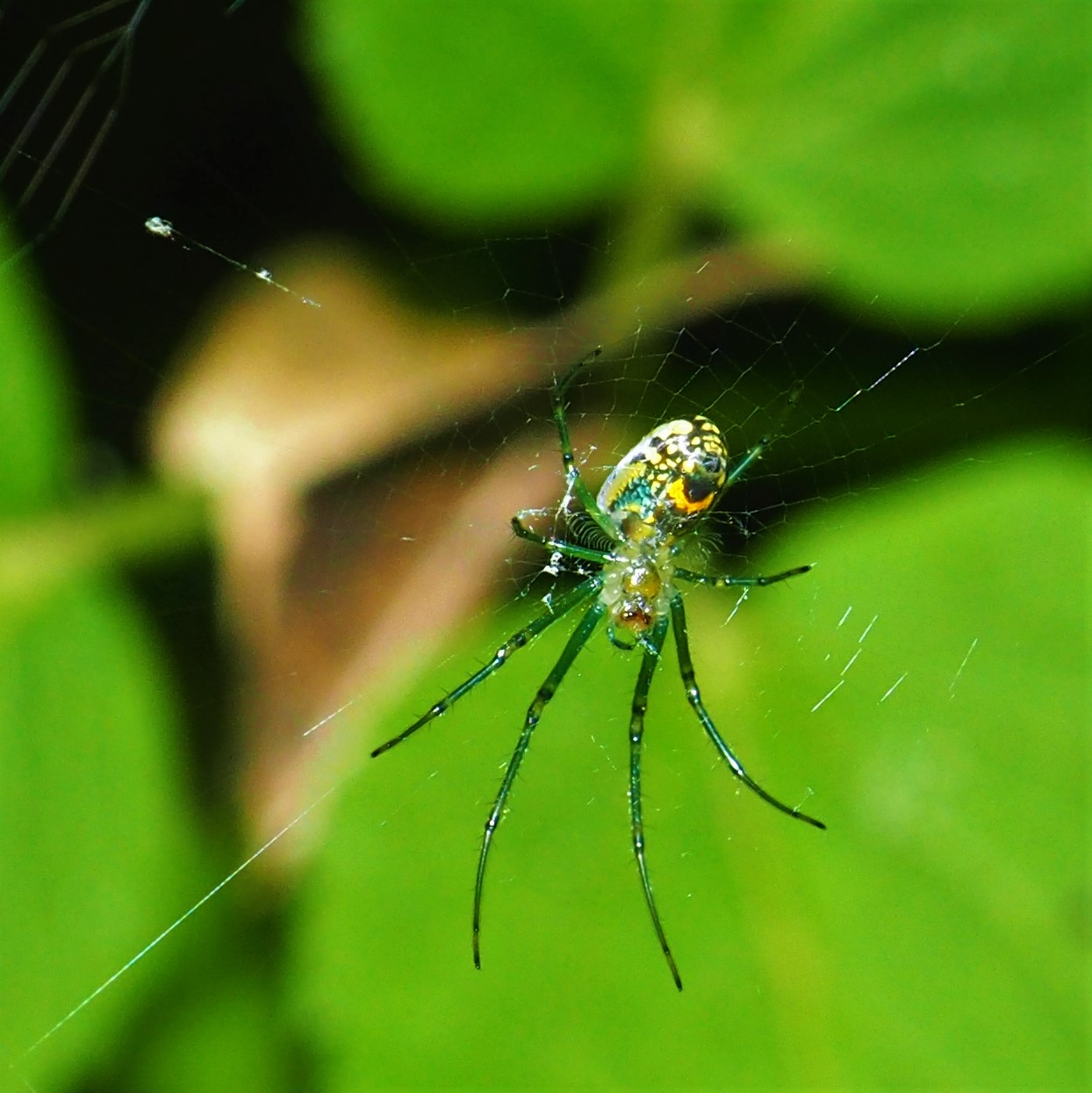
Here is a large American Toad that Debby Seely found in her yard. The Tadpoles, by the way, are doing well and surviving the hungry fishes. The feet on the older set of Tadpoles are very much pronounced these days ad it won't be long before they are climbing out of the pond, perhaps to return in a few years to join their age-mates in the mating process. Life does go on! Addendum: Some of them are indeed out of the pond. See picture 3.
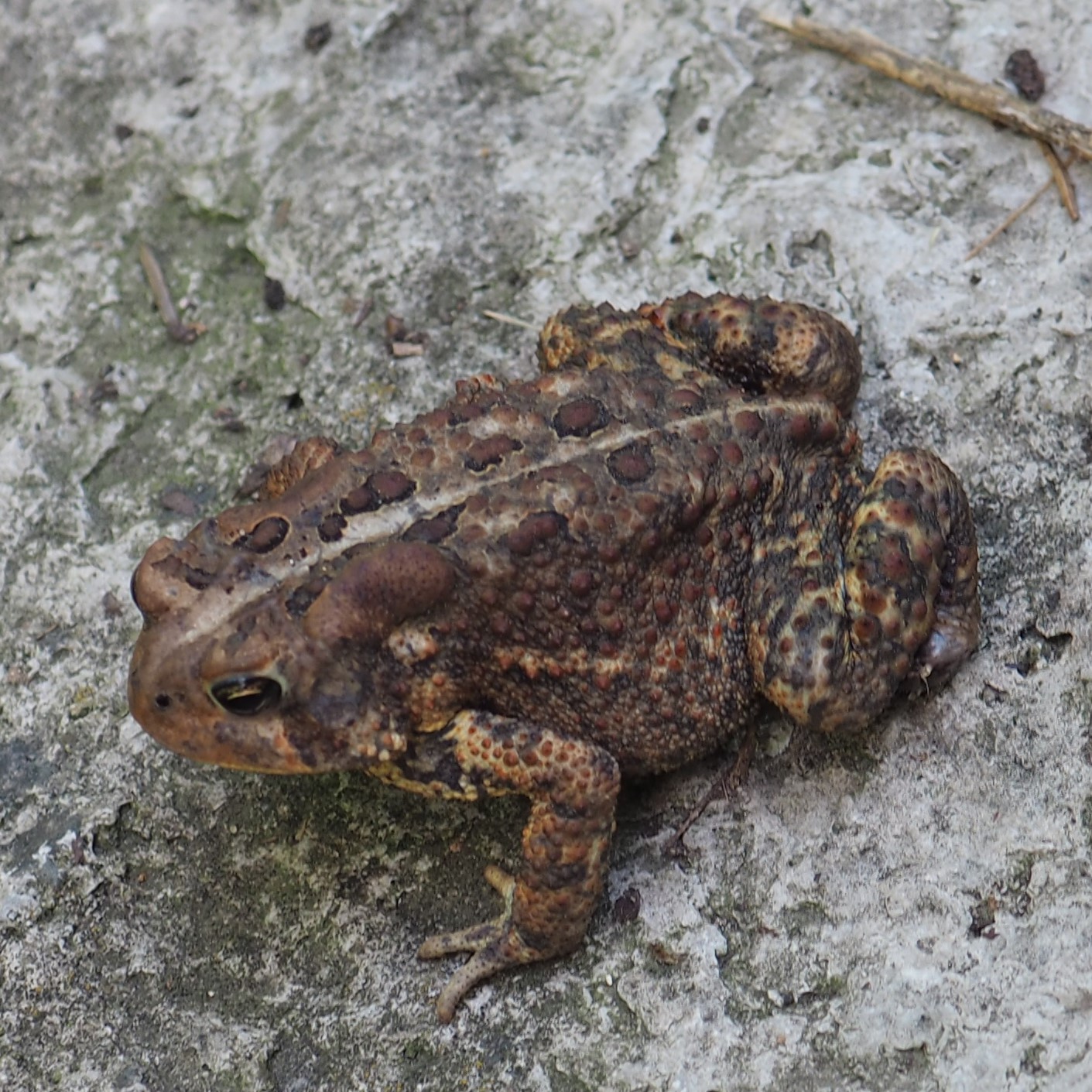
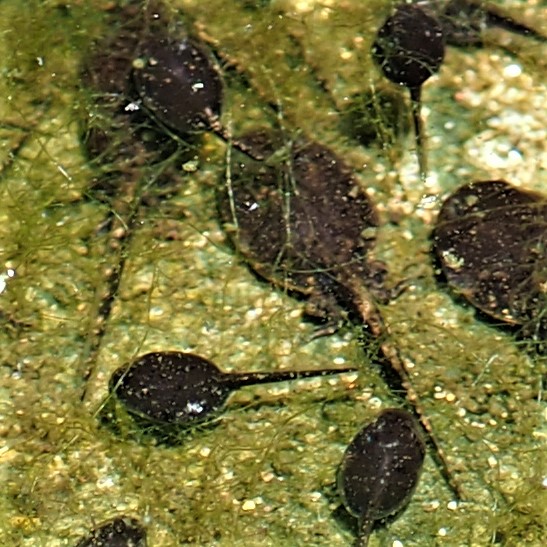
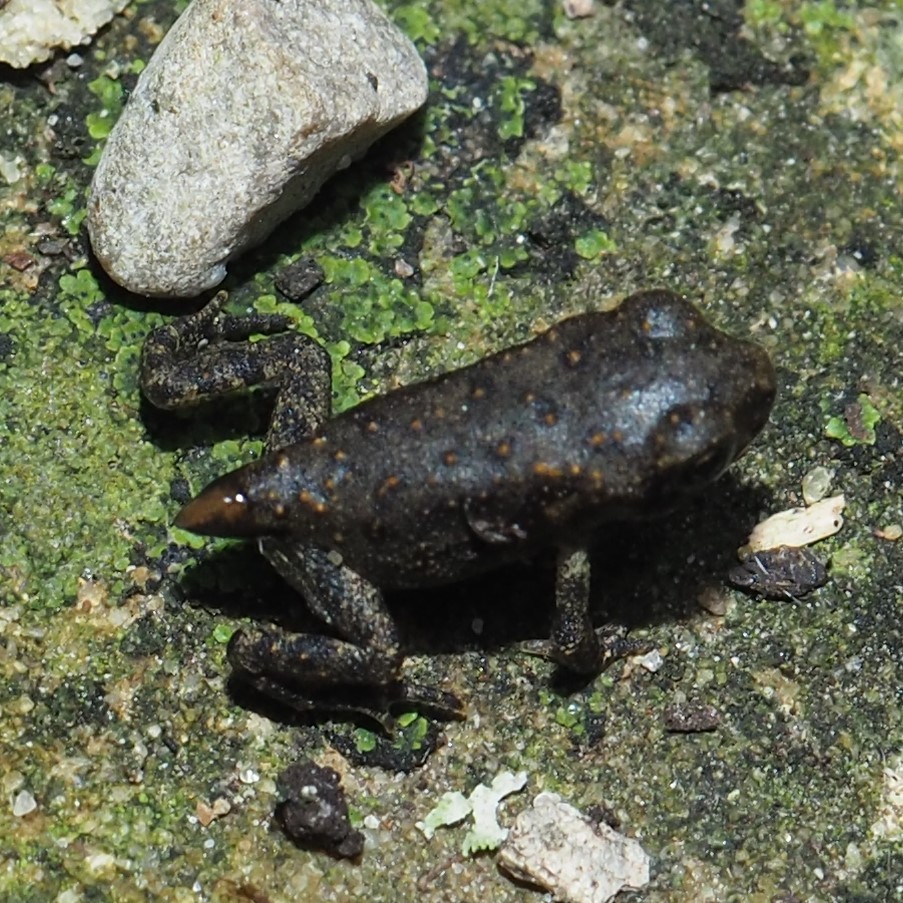
It was a good week for wasps, especially Ichneumonids. Second and third are the same individual.
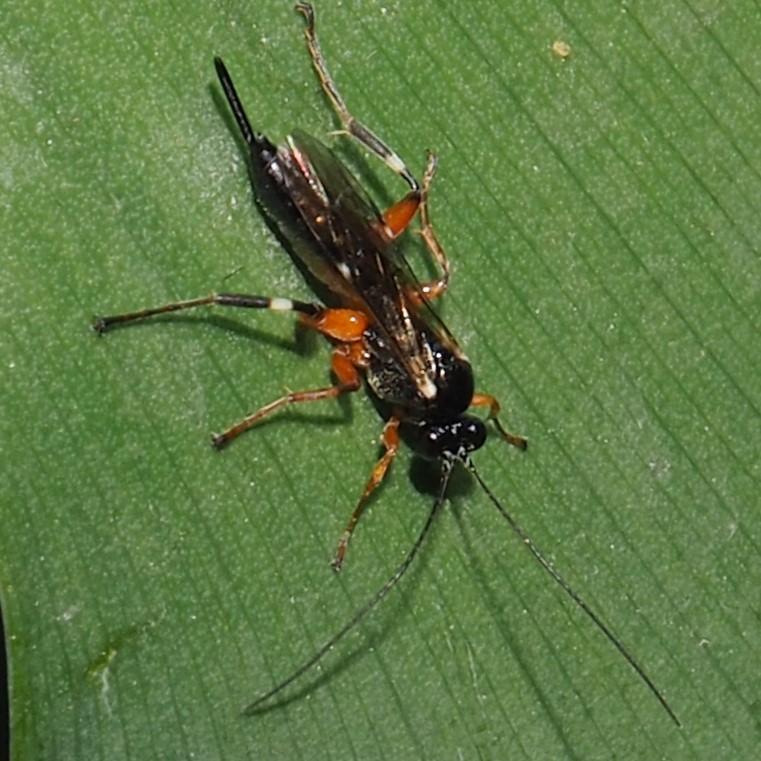

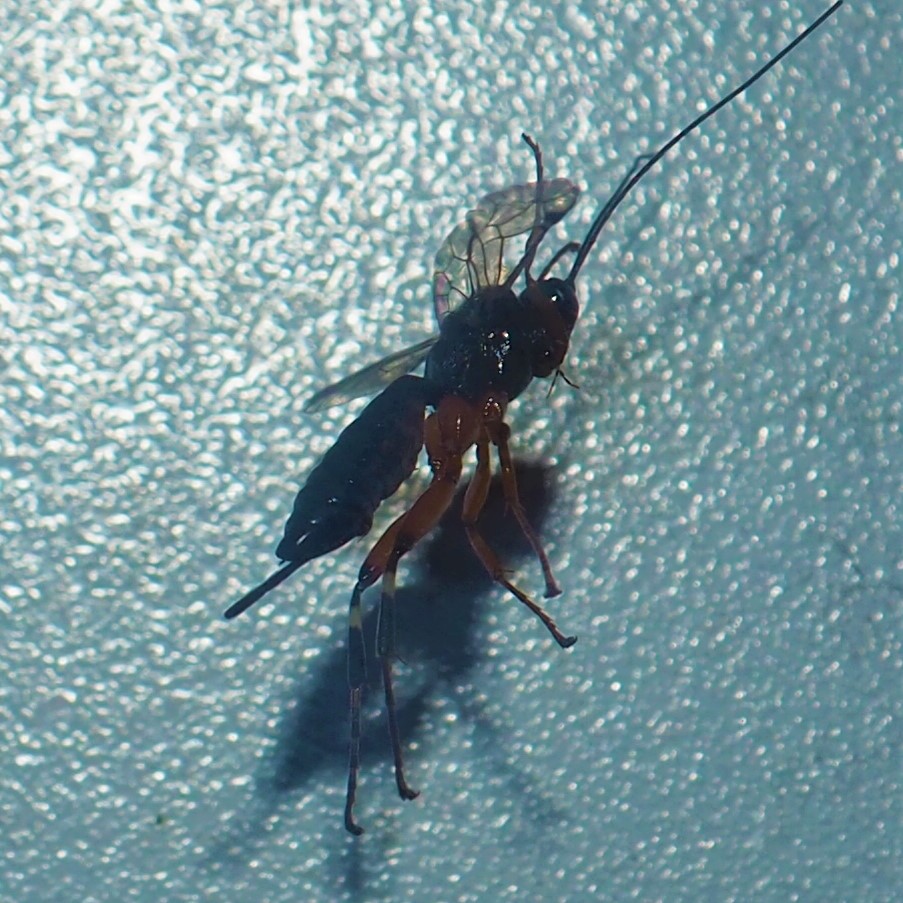
The first two pictures are of the same wasp, and the second one shows it eating something, I THINK. The third one is NOT an Ichneumonid, but some other kind of Wasp.


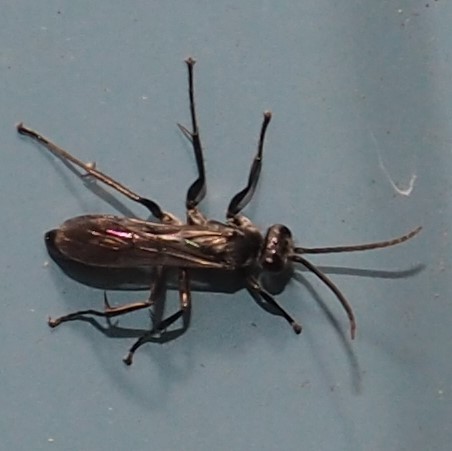
This Yellow-legged Mud Dauber flew from place to place around the pond and I was lucky enough that it came near once. And the Weevil Wasp, genus Cerceris, still loved the Goutweed.
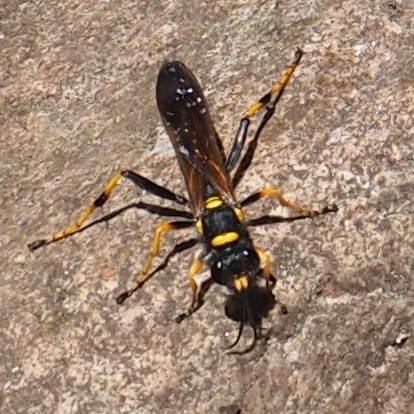

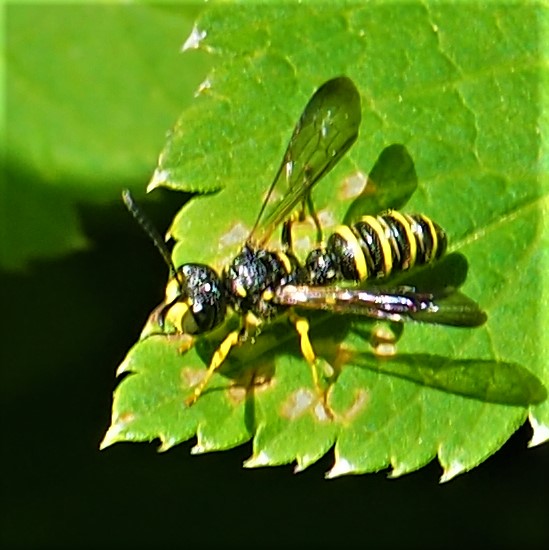
I do have a few flower pictures, though not too many.
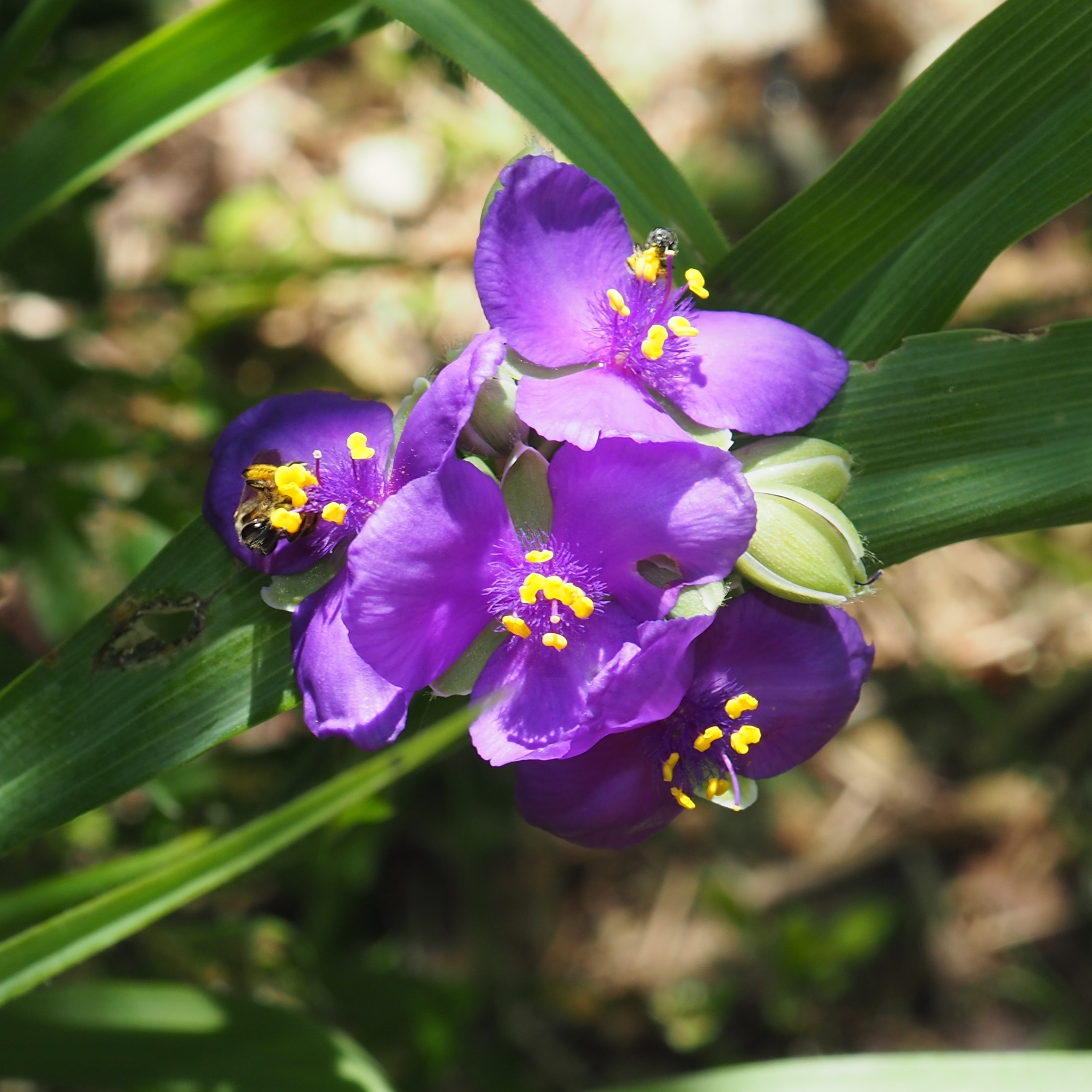


That's it. My yard isn't very much for flowers - until my Zinnia seeds come up to join the Dianthus in the Deck Box. In July the Goldenrod will be Golden and then the Asters will start in August. But before that we will see the Trumpetvine, a new Waterlily, and a pond framed by Asters and Lilies.
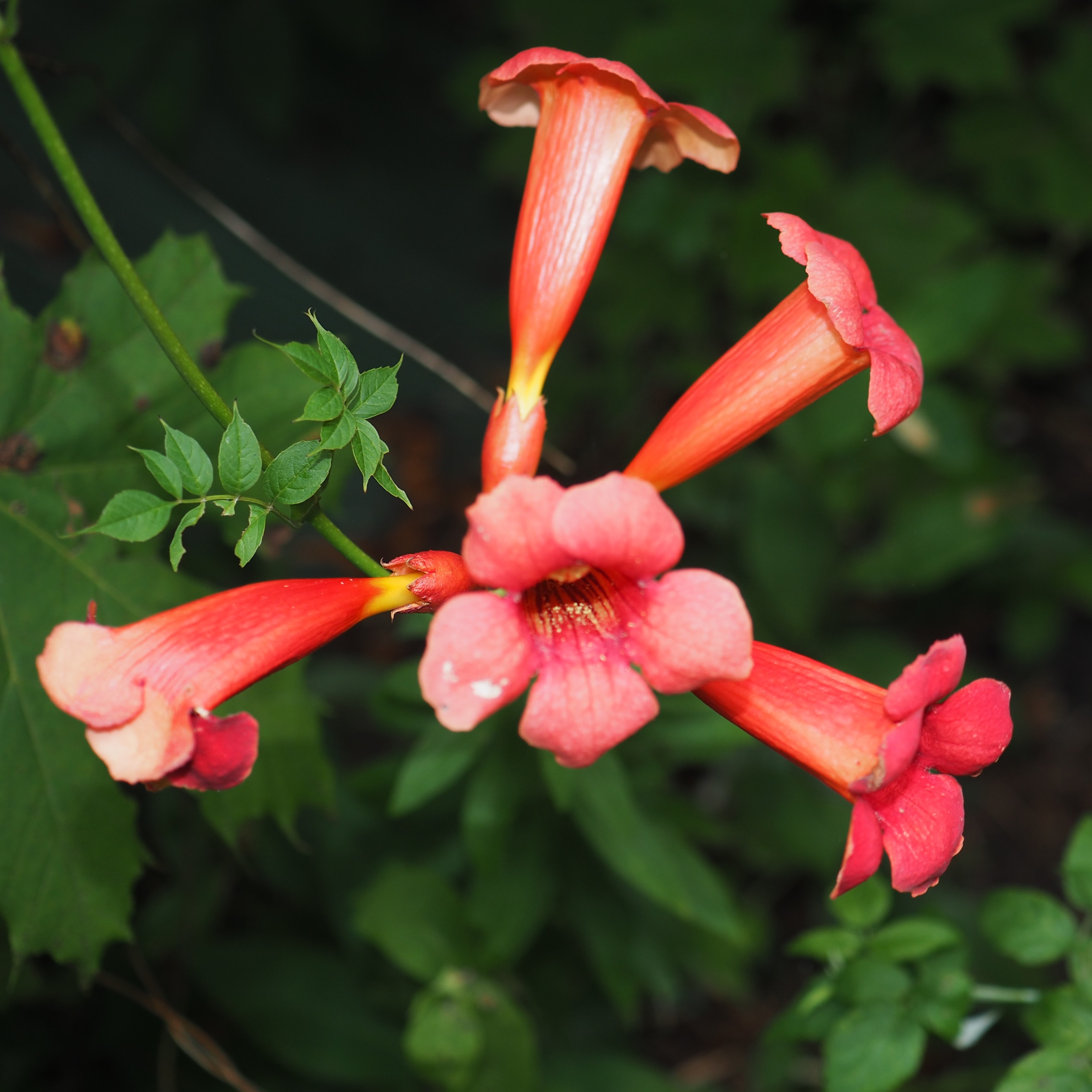

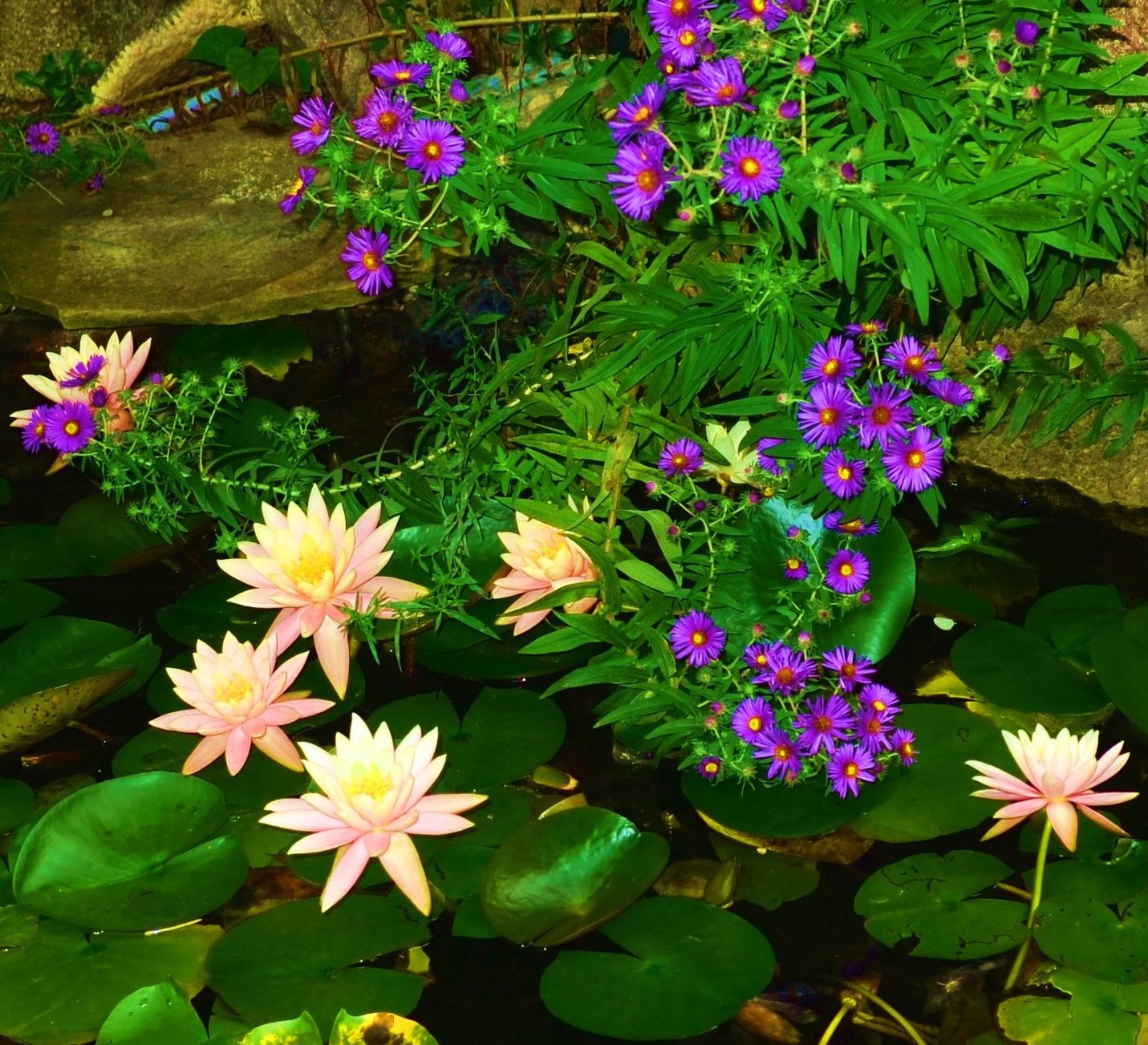
Another week of meetings via Zoom, Email, and Phone. But the chairs are set up by the pond and so if you can come in the back gate, join me for some idle chat and planning for when we can go out again without a mask. We really are all in this together and it helps to remember you are out there too. So for now,
Love, Martha
Back to June 14, 2020
Forward to June 28, 2020
Back to main menu
copyright Martha O'Kennon 2020
























































































